March 28 - April 17, 2021: Issue 489
The Australian Air League Camps At Mona Vale Beach In The Old La Corniche Building + The Robey Family Of Manly; 'Always Looking Out For Younger People'
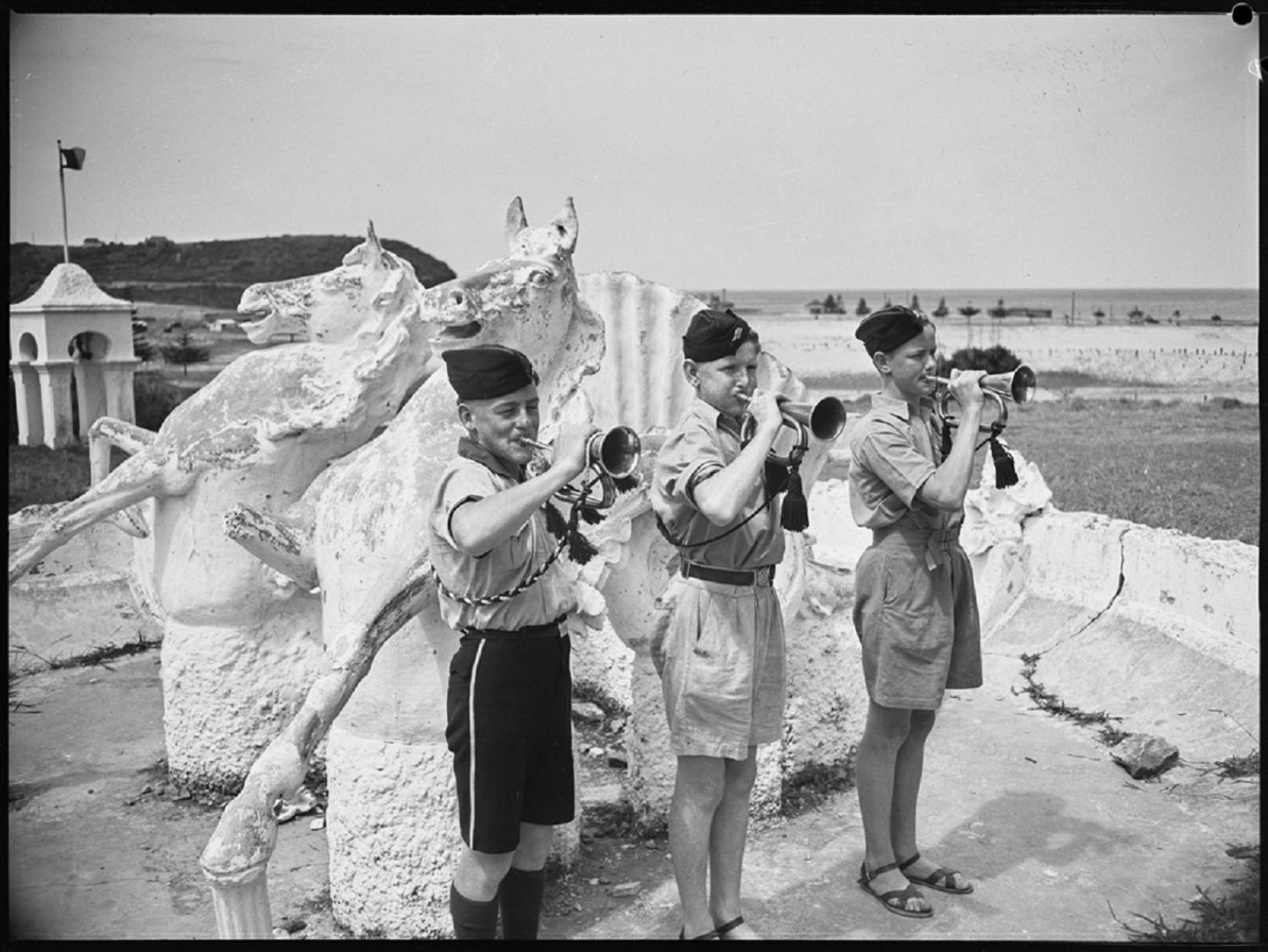
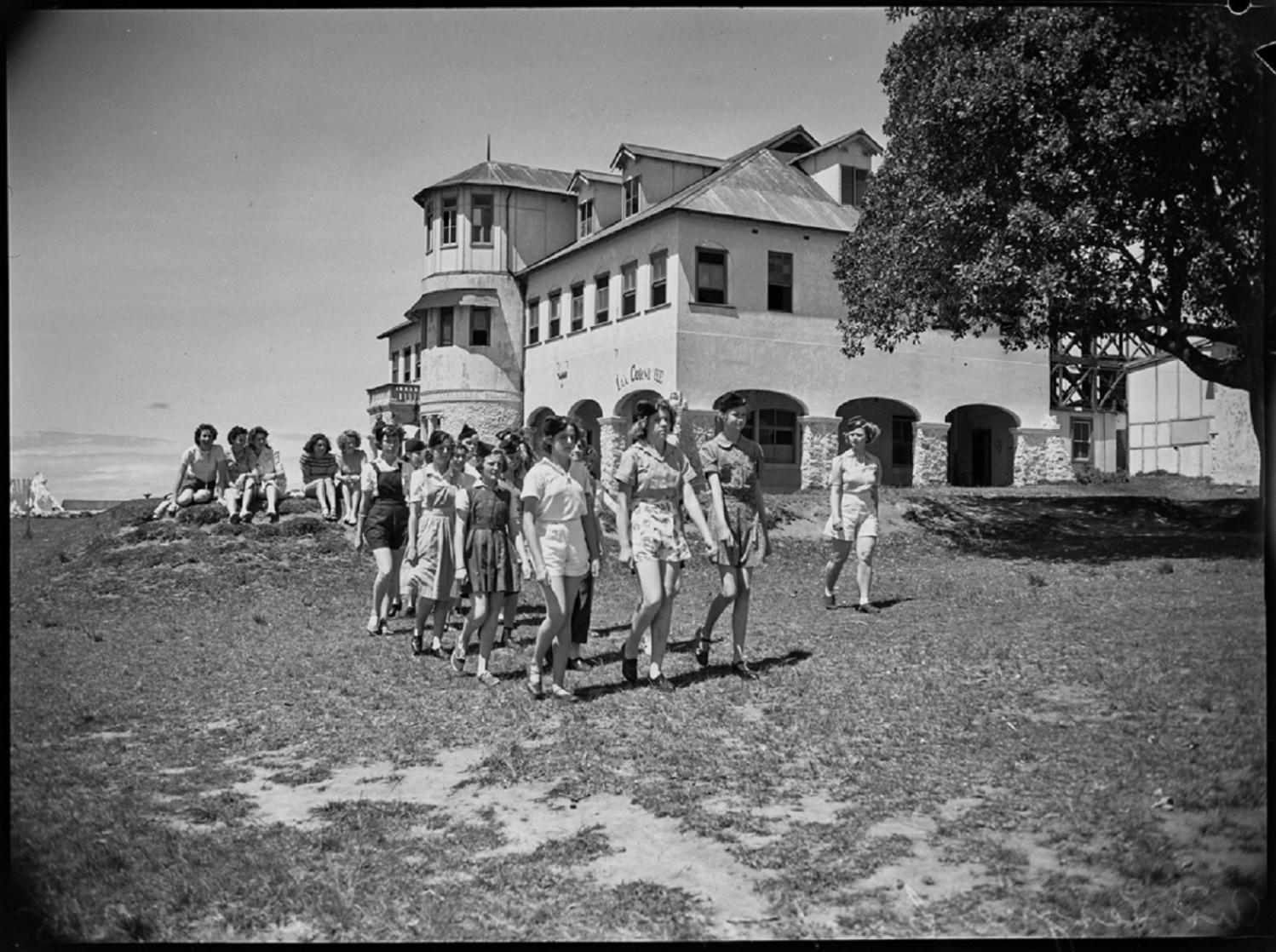
AIR LEAGUE.
Branch Formed at Manly.
The first branch of the Australian Air League was formed at Manly last night. Mr. E C Bender (hon. treasurer) who explained the objects of the league said that air travel was safer than any other method. On the Continent the Insurance for It was lower.
''In course of time'' he said even our wool will be carried from outback by air liner and probably to other parts of the world. Air transport will eventually be cheaper than by either rail or motor transport. ''
The Mayor (Alderman Seller) who had called the meeting to form a branch of the league said the purpose of the meeting was to foster air-mindedness.
Mr. A L Robey moved that a branch be formed. The motion was carried and Mr. J. A Forsyth was elected hon. secretary, pro tem. AIR LEAGUE. (1934, October 25). The Sydney Morning Herald (NSW : 1842 - 1954), p. 10. Retrieved from http://nla.gov.au/nla.news-article28020913
Manly Library records state the Australian Air League was founded in Manly in 1934 by George Horace Townsend Robey, not his brother Atwell, at the instigation of his son Keith, who wanted an aviation club as an alternative to Scouts and Guides. The very first cadets in the Air League began their training at Manly on January 17th 1935.
George Robey was the son of Horace Townsend Robey, a real estate agent in Manly, and was born in 1884 at Manly, as were his siblings. He was a foundation member of the Manly LSC and a keen sailor. The Robey name appears among many a Manly sports record, with Horace T being a keen organiser of croquet tournaments around the early 1900s.
George worked as a jackeroo in Queensland prior to joining the Queensland unit, the 9th Battalion of the AIF and serving in World War One. He was awarded the DCM for his bravery at Gallipoli. Records show that a lighter containing wounded troops had broken away and was coming under fire. Disregarding the bullets, George Robey, who was obviously a strong swimmer, swam to it with a rope and secured it so it could be towed to a safer position, saving the life of the man on board.
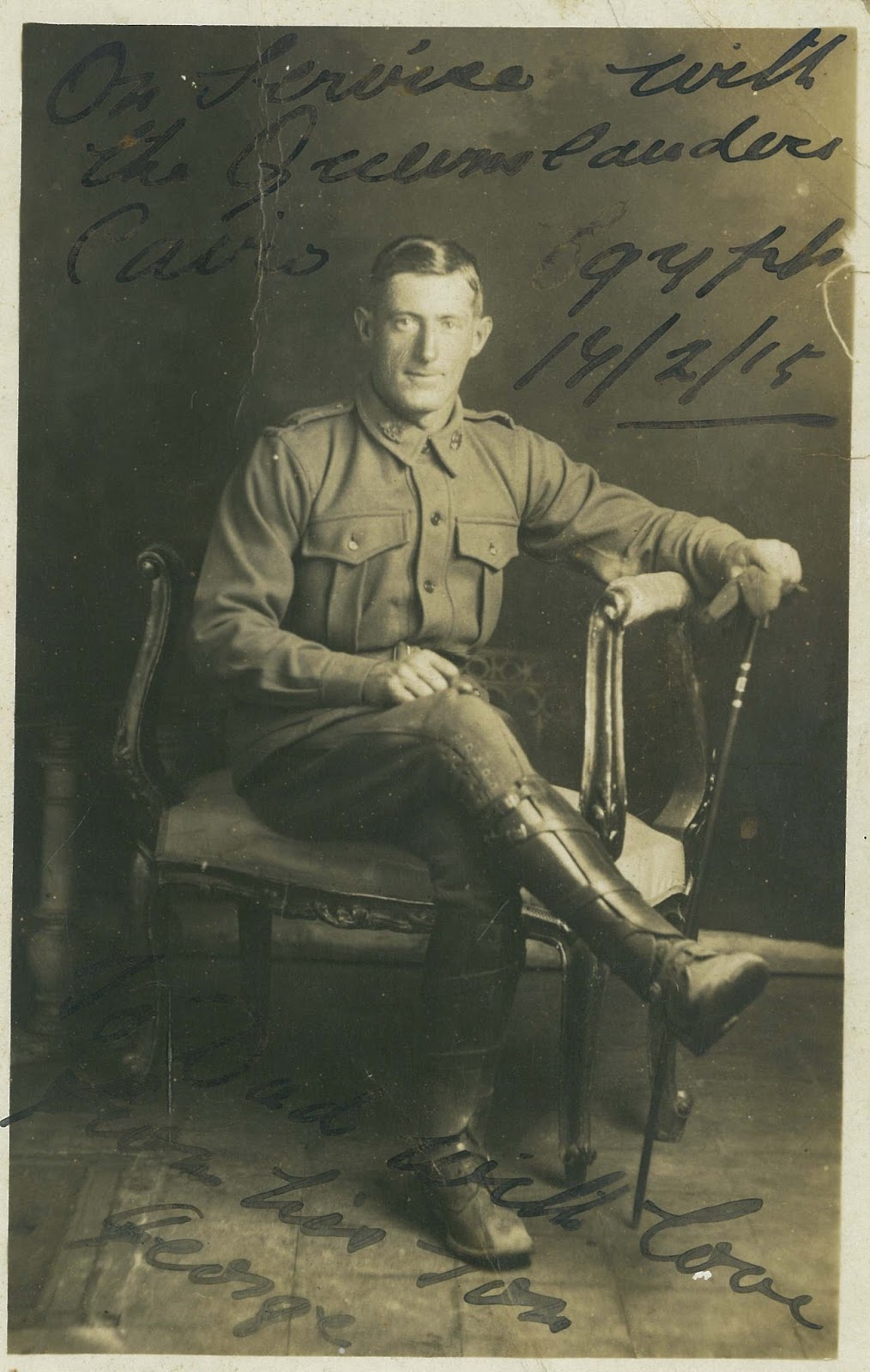
This photo of him was taken at a Cairo studio in 1915.
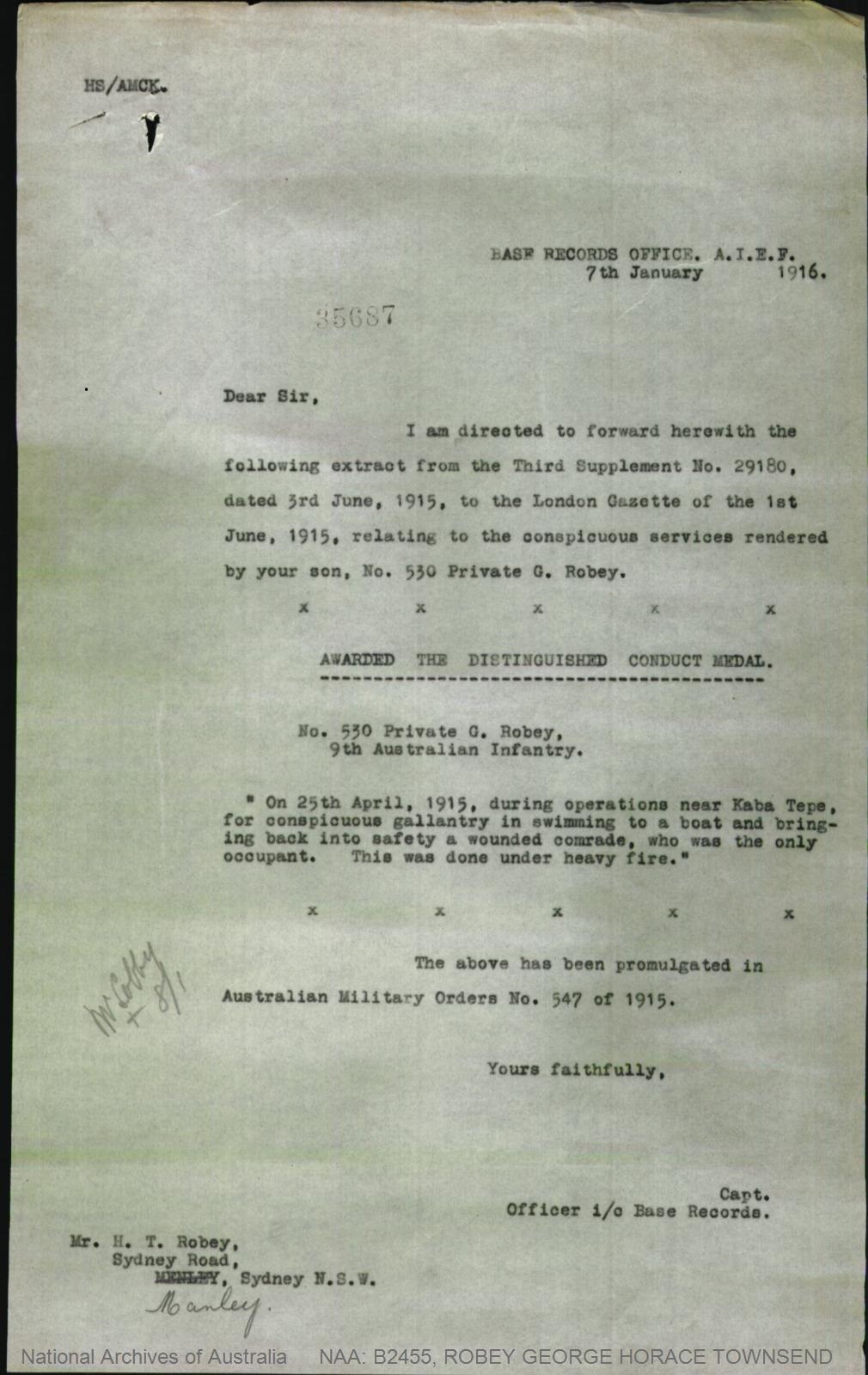
Citation from his War Records, courtesy National Archives of Australia
He also saw service in France and applied to join the Australian Flying Corps but was turned down. He was promoted to Corporal but asked to be reverted to the rank of Private.
After the war, he settled back in Manly, and married Ruby Clark in 1920. They had one son, Keith, born September 28th, 1921.
At St. James'.
A little later in the evening, at St. James' Church, Miss Florence Ruby Clark, second daughter of Capt. and Mrs. A. J. Clark, of Riva, Rose Bay, was married to Mr. George Horace Townsend Robey, second son of the late Mr. H. Townsend Robey, and Mrs. Violet Robey, of Manly, by the Rev C. J. Collis. The bride was attired in faint pink taffeta veiled in silver lace and draped with pink tulle. Her plain tulle veil was encircled with silver leaves, and her bouquet was of pink carnations and hydrangeas. Her cousin, Miss Guida McKenzie was bridesmaid. Her frock was of champagne taffetas with a girdle of turquoise blue, and she wore a black tulle hat and carried a bouquet of snapdragons and gladioli. Mr. Attwell Robey attended his brother. The bride's mother wore a gown of black satin adorned with aluminium and Chantilly lace. The reception was held at the Hotel Carlton. Mr. and Mrs. Robey are spending their honeymoon in Melbourne. At St. James'. (1920, December 12). Sunday Times (Sydney, NSW : 1895 - 1930), p. 16. Retrieved from http://nla.gov.au/nla.news-article120517470
George Robey was still a soldier in the Citizen Military Forces when, in 1927, he went to Canberra to assist in the Ceremonial Opening of Parliament House. He brought back a toy wooden aeroplane for his son Keith that sparked an interest in aviation that inspired his son and that inspiration lasted all his life.
The gift of the toy wooden aeroplane also sparked off the Australian Air League when five years later Keith complained of the lack of a youth organisation specialising in aviation.
George Robey and other sympathetic adults formed the Air Mindedness Development League on September 7th 1933, and in March 1934 the name was changed to the Australian Air League. On July 18th 1934 Keith became enrolled as the first Cadet member.
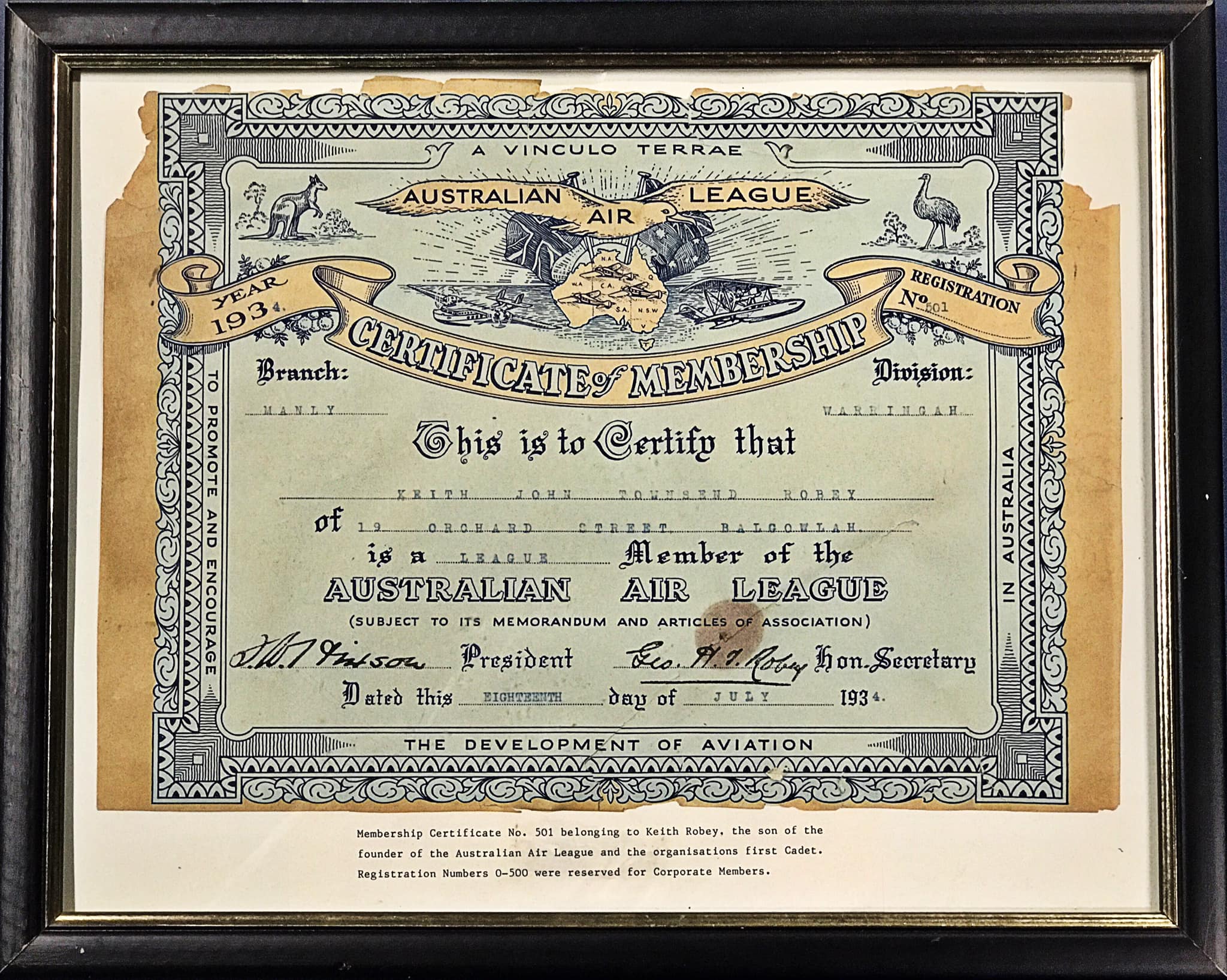
Image courtesy Australian Air League Manly Unit - from their Facebook page
Soon other squadrons were being formed in all parts of Australia. The earliest meetings took place at the dance hall at Fairy Bower, Manly. Aeronautic training began at the Sporting Union clubrooms at Manly Oval on January 17th 1935, with 30 cadets under Instructor O W Lingham and Captain W L Pittendrigh. Keith Robey was Air Cadet no 1.
A report from February 1935 states there were now 50 cadets:
Air- Mindedness — Queensland Surf Life -Saving Team — Remarkable 'Birds
The great and growing interest which the youth of Australia is taking in all branches of aerial navigation is shown most strongly, perhaps, by the number of clubs and kindred organisations which have been instituted recently for the furtherance of model aeroplaning, gliding, and aviation generally. The pictures which appear on this page provide excellent evidence of this youthful enthusiasm.
A RECORD WING - SPAN. A British soldier at Rawal Pindi, Northern India, with a vulture whose wing-span was 5ft Sin. This is believed to be a record for these birds.
MOWBRAY PARK (QUEENSLAND) SURF LIFE-SAVERS. This rescue and resuscitation team will represent Queensland in the forthcoming Australian championships in Sydney. The picture was taken at the recent surf carnival at Bundaberg.
AN EXPERT SNAKE-KILLER. The South African secretary bird, which, like the Australian kookaburra, regards the snake as a delicacy. This one, in the London Zoo, shows how it tears the reptile to pieces.
THE MANLY BRANCH OF THE AUSTRALIAN AIR LEAGUE.
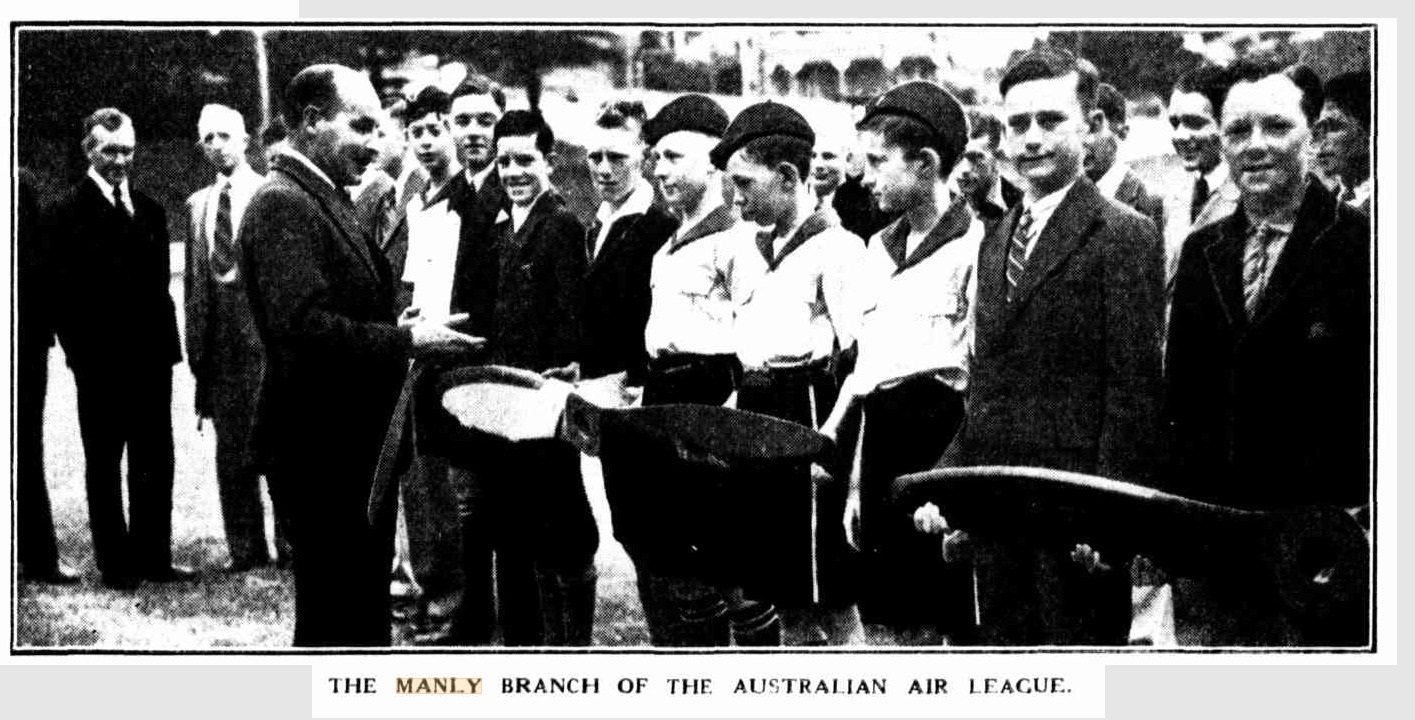
Air - Minded Youth of Australia At Right: Members of the Manly branch of the Australian Air League receiving instruction at a : parade at Manly Oval. The club has a membership of fifty. Air-Mindedness—Queensland Surf Life-Saving Team—Remarkable Birds (1935, February 6). Sydney Mail (NSW : 1912 - 1938), p. 46. Retrieved from http://nla.gov.au/nla.news-article166109542
At first the league catered solely for male cadets, but in 1944 a girls’ squadron was introduced. By the time of the organisation’s 50th anniversary it boasted over 1000 members.
Local squadrons were formed at Manly, Bantry Bay and Mona Vale. The Manly squadron met at a timber-framed building at Lagoon Reserve. In 1950 the building was relocated to Hinkler Park (which is itself named after a famous aviator), and the squadron is still based there today.
In early 1939 the first Squadron was opened in Victoria. Unfortunately George Robey died at the young age of 56, prior to seeing how popular the Australian Air League would become:
DEATH OF MR. G. H. T. ROBEY.
Founded Air League.
WON D.C.M. AT GALLIPOLI.
The death occurred yesterday of Mr. George Horace Townsend Robey, founder and general secretary of the Australian Air League, aged 56.
Mr. Robey was a son of the late Horace Townsend Robey, founder of Robey, Hanson, and Strong Pty., Ltd., the oldest real estate agency in Manly. For a time he was a jackeroo on a station in North Queensland. He was an original Anzac. He served four years and four months at the war, and was one of the first Australians to be awarded the D.C.M, for gallant conduct at Gallipoli. A lighter full of wounded troops had broken away, and was under fire. Mr. Robey, who was a strong swimmer, swam with a rope and made it fast to the lighter, thereby saving the troops in it.
Mr. Robey was a member of the Royal Aero Club. Six years ago he founded the Australian Air League. Two years ago he established an Air League in Victoria, and 12 months ago he started a similar movement in Queensland. The league in New South Wales grew rapidly, and his services became so essential to its success that the council of the league eventually persuaded him to devote the whole of his time to it as general secretary.
Upon his return from the last war, Mr Robey married Ruby, a daughter of Captain A. J. Clarke. His only son, Mr. Keith Robey, was the first cadet in the Australian Air League, and now has his A pilot's licence.
Before the war Mr. Robey was a prominent member of the Manly Life-saving Club and the Manly Sailing club, and during the depression he was a member of the council of the Unemployed Relief Committee.
As a mark of respect for him flags were flown at half-mast in Manly yesterday.
He is survived by Mrs. Robey and his son.
A service will be held at St. Matthew's Church of England, Manly, at 2,15 p.m. to-day, before the funeral leaves for Manly Cemetery. DEATH OF MR. G. H. T. ROBEY. (1940, March 1). The Sydney Morning Herald (NSW : 1842 - 1954), p. 13. Retrieved from http://nla.gov.au/nla.news-article29889558
In 1944 the first Girls Section was formed and the local units leased the La Corniche building. This was on the site of the old The Oaks estate built by George Brock. When he lost that through bankruptcy it passed through the hands of a few leasees prior to becoming 'La Corniche' under the Rainauds in September 1911, who had a similar but smaller establishment at Bayview of the same name. On January 8th 1912 the main building was burned beyond repair. Arthur Rickard then owned the building, its contents and surrounding grounds. One article states he had La Corniche insured for £6000, but that this would not cover the cost of a rebuild. La Corniche was rebuilt, with the Rainauds returning for a while, prior to moving elsewhere. From 1934 until the outbreak of WWII it was leased by English psychologist Mary Sheridan who established the ‘Quest Haven’ school in the premises. The building was utilised during WWII as a training centre for the Army and RAAF. Although the surrender of Japan was not announced until August 15th and formally signed on September 2, 1945, bringing the hostilities of World War II, the fear of invasion had lessened, enough for Australian Air League organisers to lease this structure.
Our area still had a lot of the markers of the WWII defences put in place but 'something for the children' was needed - something that engaged and inspired them, as so many RAAF pilots had during this conflict.
This item from former Warringah Councillor George Dunbar, for whom Dunbar Park Avalon Beach is named, shows the tank trap atop the hill La Corniche looked towards, at Bungan Beach, was still in place six months later:
DANGER ON ROADS
- Sir,-We have had a great deal of publicity on road safety, sponsored, I believe, by a Road' Safety Council reputedly representative of all authorities and. bodies interested in the safe use of our streets and roads.
Might I draw to the notice of all concerned, particularly the Main Roads Department and the military authorities, the tank trap across Barrenjoey Road between Newport and Mona Vale, and the danger created by the bridge across the tank trap on the main road and the hazardous entry of Hillcrest Avenue into the main road?
Are the military authorities and the Main Roads Board waiting for a fatality to occur? There have been accidents al-ready. Motorist residents and users of Hillcrest Avenue have difficulty, even in daylight, in negotiating the turn off the main road, and tradespeople tend to shun the area.
There is no barrier across the end of Hillcrest Avenue to indicate to motorists using the road at night that the road ends in a 20ft drop into the tank trap.
How long must this state of affairs exist?
It is not a matter for the Shire Council.
G. K. DUNBAR, Sydney. Councillor, Warringah Shire. DANGER ON ROADS (1946, March 13). The Sydney Morning Herald (NSW : 1842 - 1954), p. 2. Retrieved from http://nla.gov.au/nla.news-article17971999
Part of the building was utilised after the war as a clubhouse by what became the Mona Vale SLSC. The building was demolished to build home units after 1953. Bert King OAM, of Narrabeen and Newport, late Bayview, as Bert King Constructions, built the first ever units in Mona Vale in Darley Street East on the crest of the hill where the old La Corniche used to be, explaining during his Profile interview; "... pulled it down and everyone complained about it being pulled down but the building was a heap of rubbish (by then)".
However, in late 1944 it became a teaching and playground for children:
CHANGES IN AIR LEAGUE
Two major changes in the organisation of the Australian Air League, the subdivision of training of cadets and the introduction of a girls' section, were announced in the tenth annual re-port presented to the general meeting yesterday.
Boys 8 to 11 years will now be junior cadets. They will wear a distinctive uniform and have their own officers. Those from 12 to 15 will wear the present junior uniform, but will be known as senior cadets and have their own officers. Boys 16 and over will be trainees, the majority of whom will be trainee officers, who will wear the existing senior cadet uniform.
The syllabus for those under 12 will be simplified, and will include subjects designed to give an aviation back-ground and to give physical recreation through organised games.
The girls' section will be separate, but will be organised on the same lines as the present boys' section. Members will have their own women officers. Already there are 85 trainee officers for this section.
The league has leased the National Fitness camp at Mona Vale, and is considering the acquisition of a permanent site.
Office-beaters elected were:-President, Sir Alfred Davidson; Vice-presidents, Messrs. J. Hubert Fairfax, C. M. C. Shannon, Sir Keith Smith, Messrs. C. J. L. Cuzner, Gordon Young, and Lady Davidson; councillors, Messrs. E. F. Cooper, W. McComas, W. Nelson, and Mrs. P. A. Cameron; honorary treasurer, Mr. J. J. Sainsbury. CHANGES IN AIR LEAGUE (1945, January 4). The Sydney Morning Herald (NSW : 1842 - 1954), p. 4. Retrieved from http://nla.gov.au/nla.news-article17937030
By May 1945 a Newcastle newspaper was reporting that the Mona Vale Air League camp was being used by 5000 cadets annually. These articles and photos from October 1945 illustrate the activities involved at the camp:
These are the Flapper of '46
And, unlike the flappers of a generation ago, they have the week-end camps of the Australian Air League Girls' Section to help them grow real wings.
By PATRICIA PEARSE
MORE than 2,000 girls between 8 and 16 years of age in New South Wales devote their spare time to the Air League as junior and senior cadets. Girls above this age limit can serve as officers after they have passed through the necessary training period and succeeded in an entrance examination.
The Air League known as the "Baby of the Air Force" and one of the highlights of its activities is a regular camp at La Corniche, Mona Vale.
When I visited one of these camps recently I found 70 girls enjoying a not-too-regimented but well organised week-end. They had all the fun of camp life but were conscious of a more serious aim.
On the first day of camp they had been put through an eight mile route march-with frequent breathing spells for the smaller members - had attended classes in aircraft recognition and made a study of the deep secrets of an aircraft engine. They had played a game of basketball, had organised a camp fire and eaten three good meals.
Divisional commander and officer in charge of the camp was Miss Pauline Mellett who has been with the section for 18 months since its formation.
Miss Mellett is herself very conscious of the higher aims of the League's Girl's Section.
"It was formed to promote an interest in aviation," she told me, "and at the same time to encourage a team spirit. Girls who belong to an organised group gradually break down self-consciousness and there is so little done in Australia to organise 'teenage girls. The brilliant record of the Air Force during the war has made many girls air-minded."
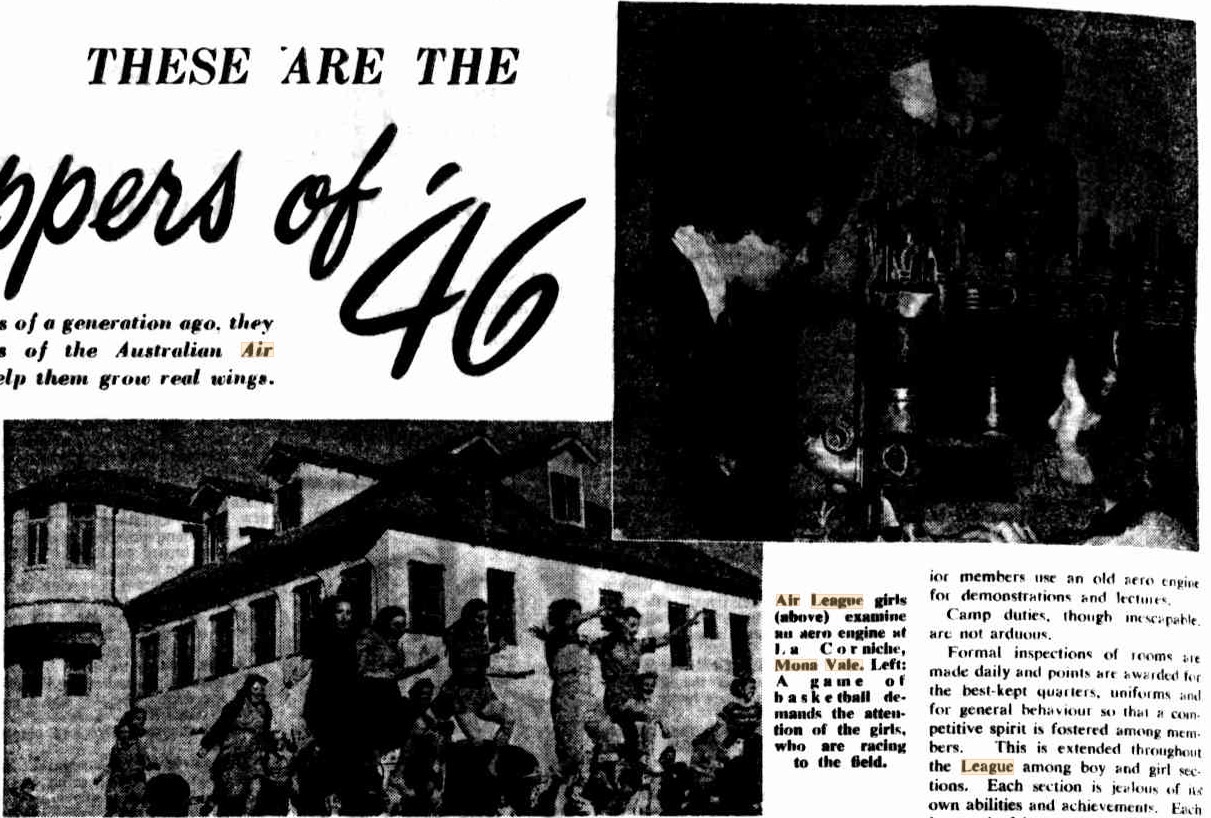
Air League girls (above) examine an aero engine an La Corniche, Mona Vale. Left: A game of basketball demands the attention of the girls, who are racing to the field.
The girls' section recently bought three Tiger Moth aircraft which will later be used for training purposes. In the meantime at their camps, senior members use an old new engine for demonstrations and lectures. Camp duties, though inescapable, are not arduous.
Formal inspections of rooms are made daily and points are awarded for the best-kept quarters, uniforms and for general behaviour so that a competitive spirit is fostered among members. This is extended throughout the League among boy and girl sections. Each section is jealous of iii own abilities and achievements. Each is proud of 'its own songs and games. And only on social occasions is the air of formality dropped.
Officers told me that many more companies could be opened up in New South Wales if the League has more trained personnel. At present there are three companies in Newcastle and three in Sydney. A new branch will be opened at Penrith shortly. THESE ARE THE Flappers of '46 (1946, July 16). The Sydney Morning Herald (NSW : 1842 - 1954), p. 6 (The Sydney Morning Herald Magazine.). Retrieved from http://nla.gov.au/nla.news-article17992172
Air League
PENRITH COMPANY.
(By Member.)
Penrith girls had a wonderful time last week-end, which they spent In camp at Mona Vale, with North Sydney, Kuringai, and Manly companies. There were over 100 girls in camp, and their week-end activities Included a route march, church parade, modelling classes, paper chase, and two concerts.
In the athletic sports on Saturday, though some of their senior officers were absent, Penrith won a pennant for the company point score by over 30 points. On Monday, at a beach parade, Penrith Juniors were Judged the best section in the march past. Then, to complete our successes, C.S.C. Gwen Paskin (Penrith), was awarded the trophy for the best N.C.O. and cadet In camp. Well done, girls!
The boys will have their camp on the last week-end in November. From the enthusiasm shown at the night parades, there should be a full quota attending the camp from here.
Next Saturday, our girls will hold their Divisional Sports at Parramatta Park. There they will compete against girls from Westmead, Burwood, and Five Dock companies, and the winners of each event will represent No. 6 Division at the annual sports on 25th Instant. All girls of this company will attend, and any new girls desirous of joining up, are also invited. Cadets will report at Penrith station at 8.45 a.m. (travelling by the slow train), and will require their 'lunch, sandshoes, and shorts. Air League (1947, October 9). Nepean Times (Penrith, NSW : 1882 - 1962), p. 2. Retrieved from http://nla.gov.au/nla.news-article117907256
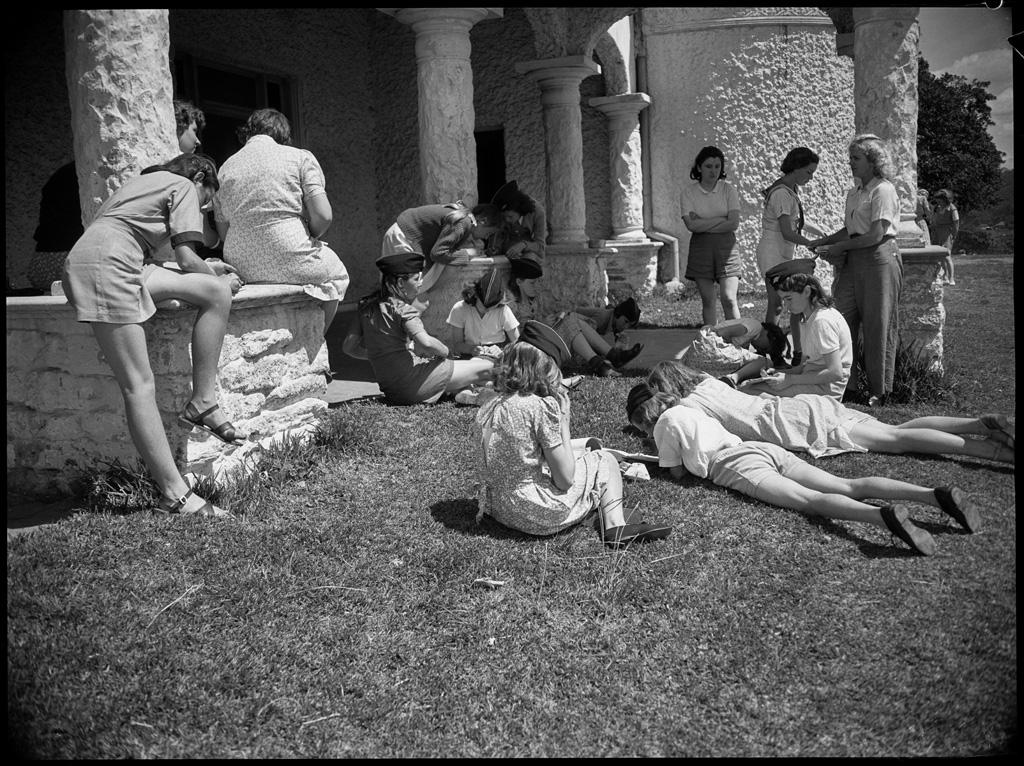
Air League comp at Mona Vale, October 6th 1945 / photographed by Ivan Ive, courtesy Mitchell Library, State Library of New South Wales and Courtesy ACP Magazines Ltd.
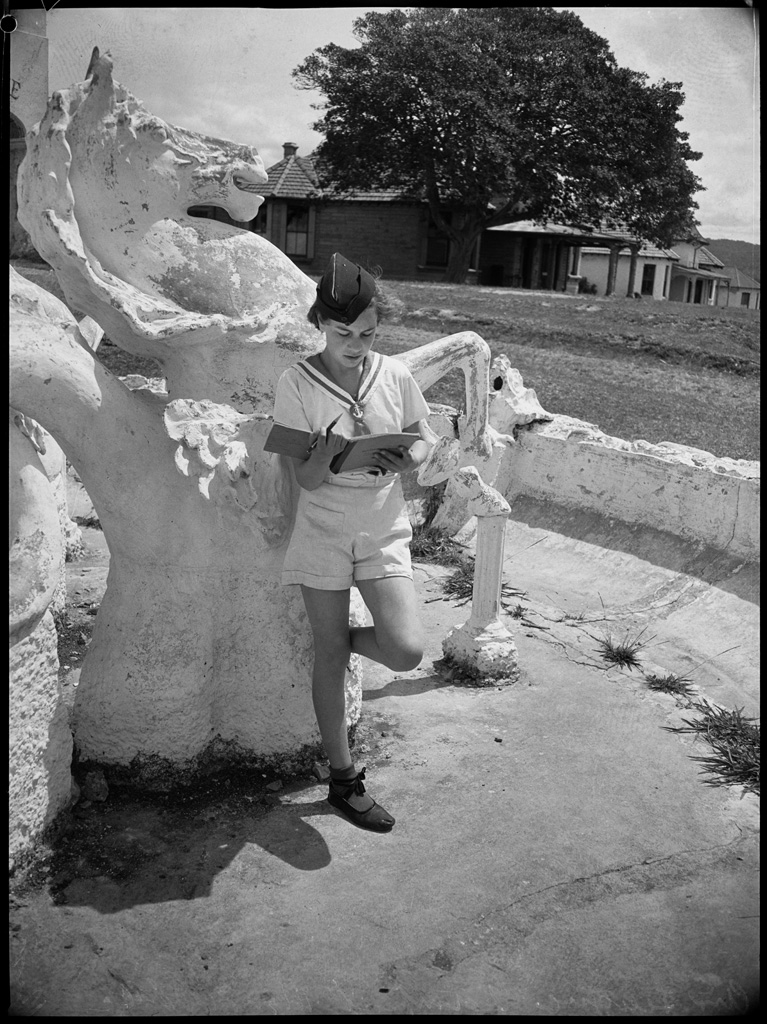
Air League comp at Mona Vale, October 6th 1945 / photographed by Ivan Ive, courtesy Mitchell Library, State Library of New South Wales and Courtesy ACP Magazines Ltd.
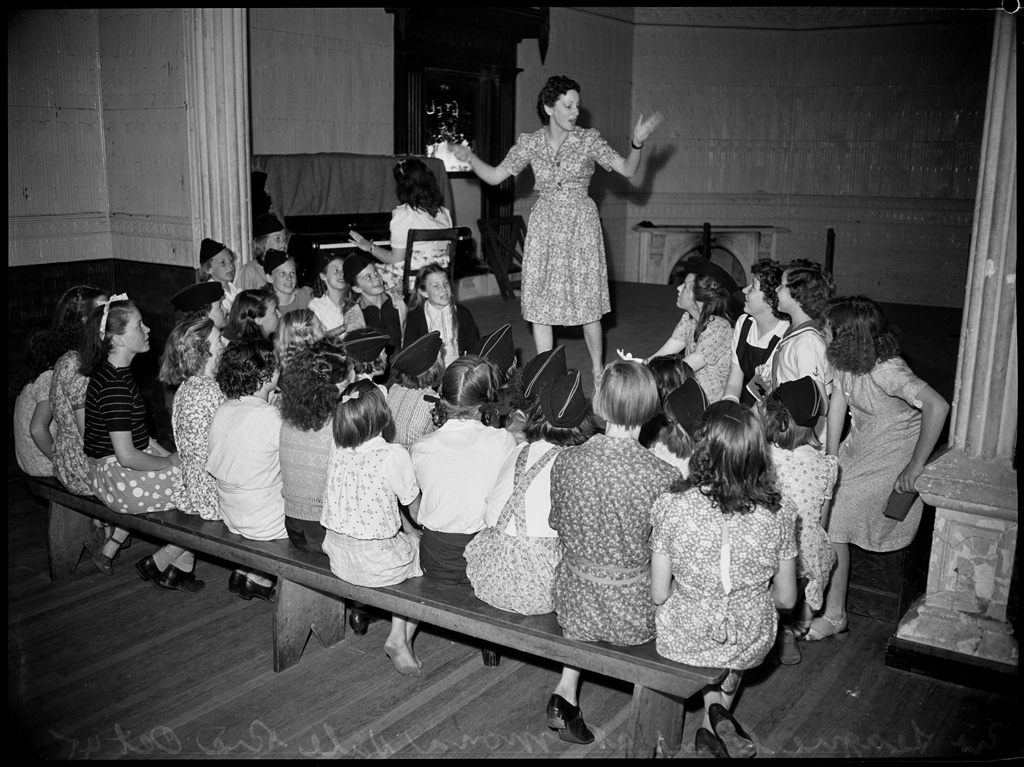
Air League comp at Mona Vale, October 6th 1945 / photographed by Ivan Ive, courtesy Mitchell Library, State Library of New South Wales and Courtesy ACP Magazines Ltd.
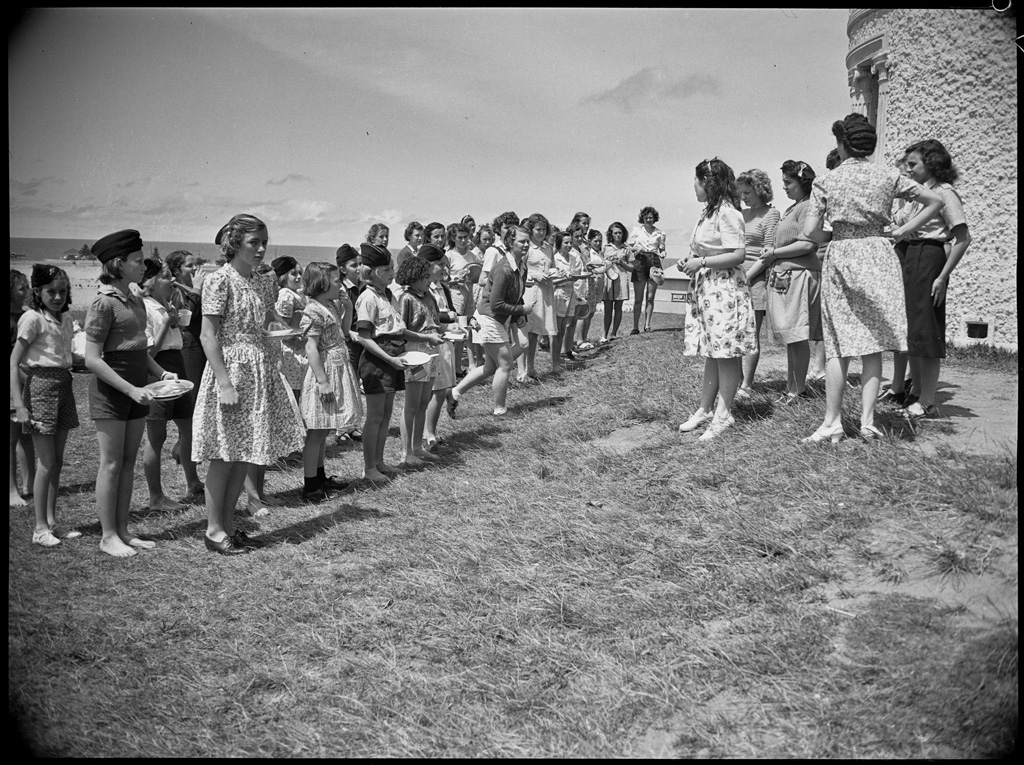
Air League comp at Mona Vale, October 6th 1945 / photographed by Ivan Ive, courtesy Mitchell Library, State Library of New South Wales and Courtesy ACP Magazines Ltd.
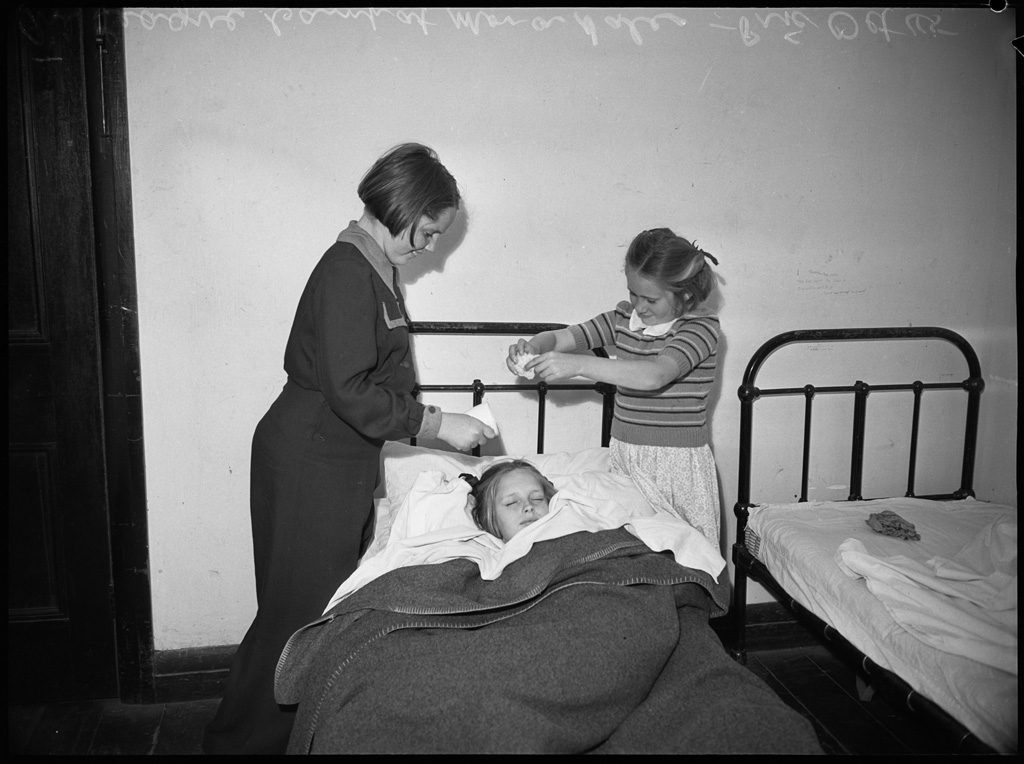
Air League comp at Mona Vale, October 6th 1945 / photographed by Ivan Ive, courtesy Mitchell Library, State Library of New South Wales and Courtesy ACP Magazines Ltd.
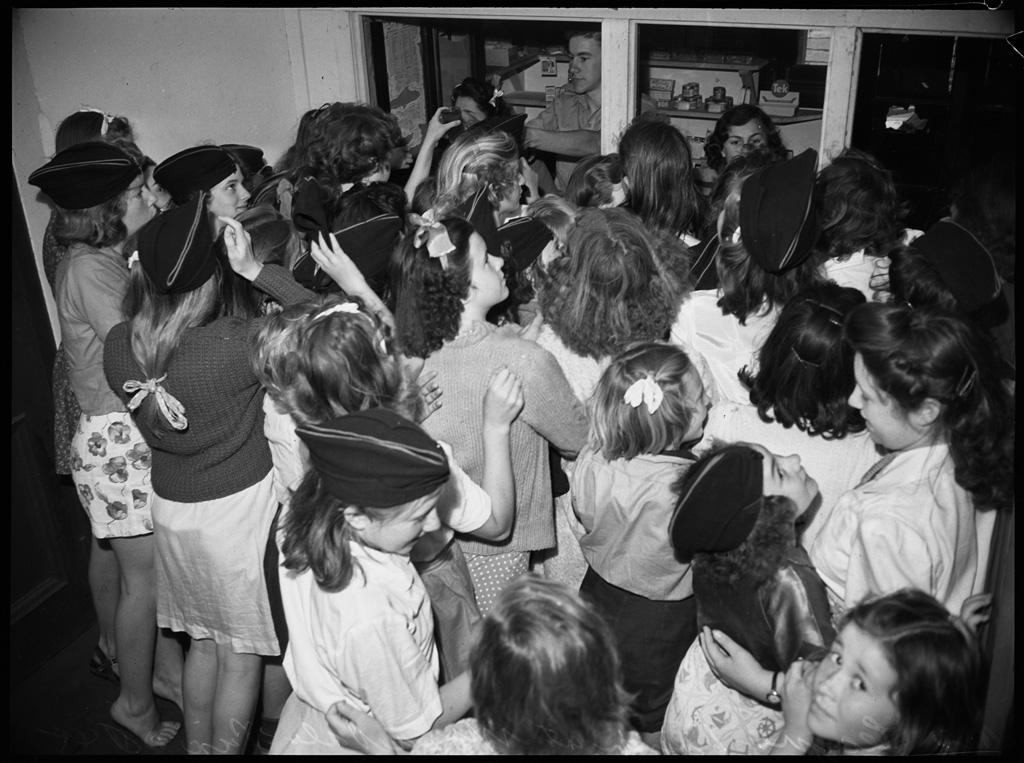
Air League comp at Mona Vale, October 6th 1945 / photographed by Ivan Ive, courtesy Mitchell Library, State Library of New South Wales and Courtesy ACP Magazines Ltd.
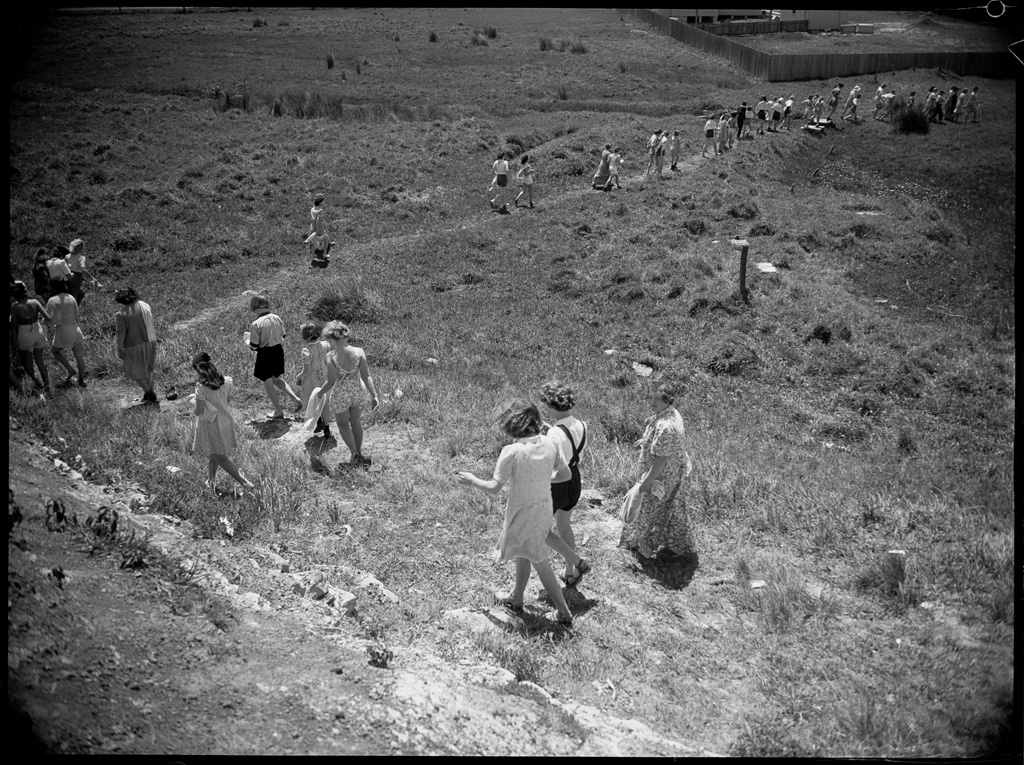
Air League comp at Mona Vale, October 6th 1945 / photographed by Ivan Ive, courtesy Mitchell Library, State Library of New South Wales and Courtesy ACP Magazines Ltd.
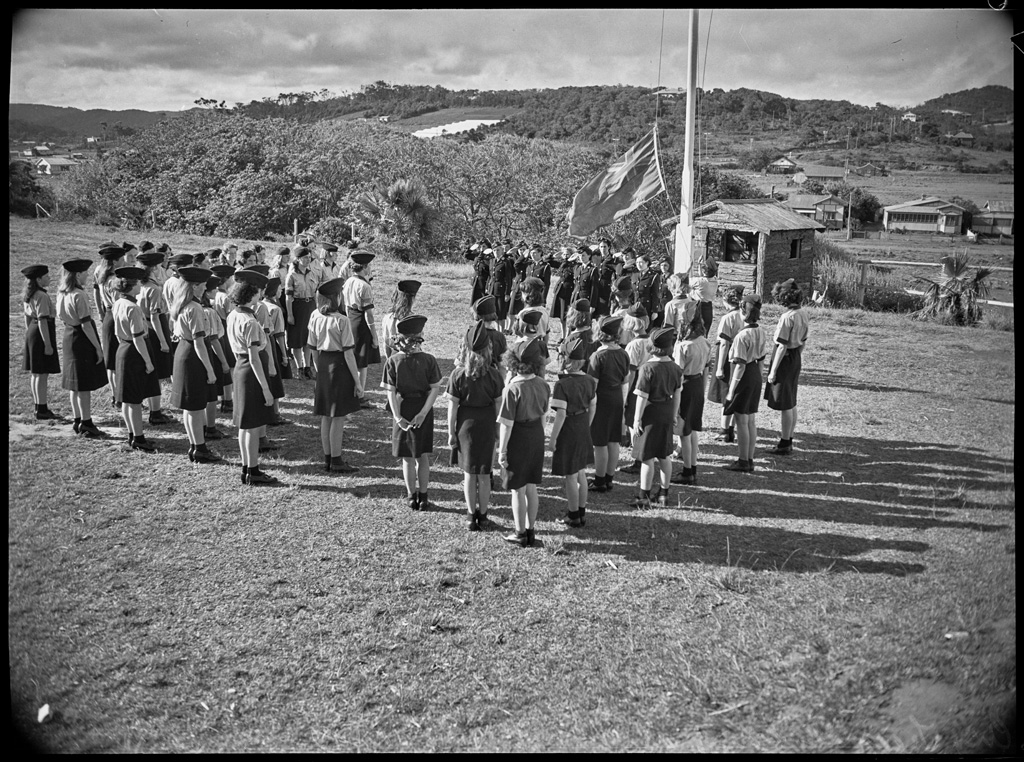
Air League comp at Mona Vale, October 6th 1945 / photographed by Ivan Ive, courtesy Mitchell Library, State Library of New South Wales and Courtesy ACP Magazines Ltd.
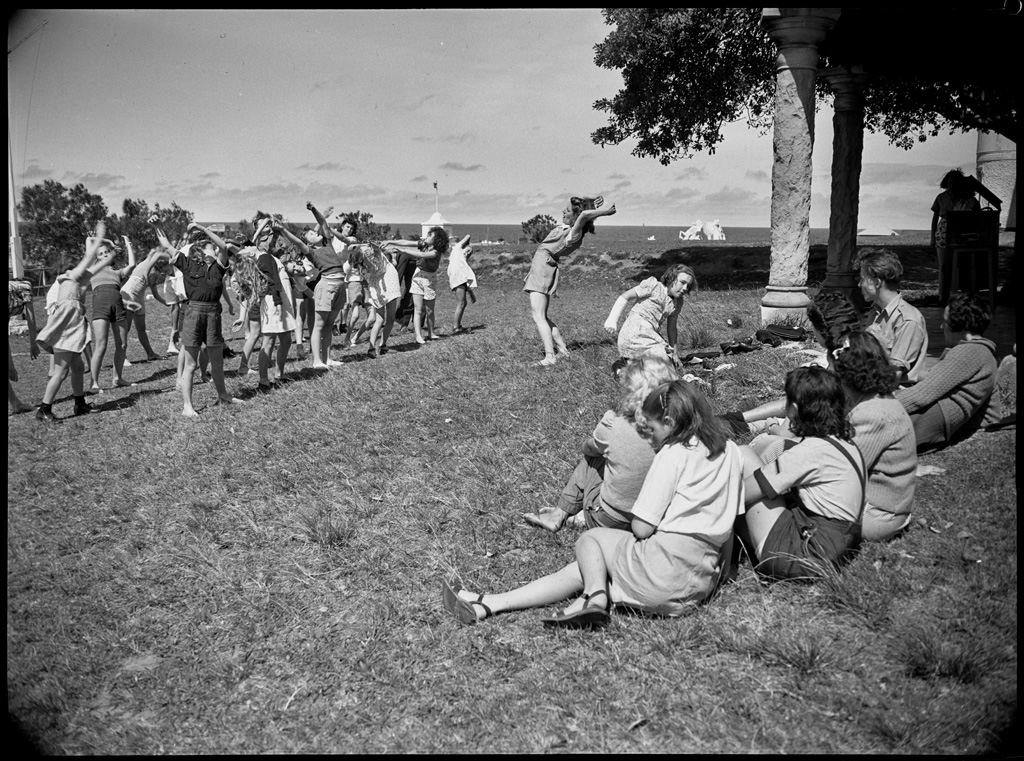
Air League comp at Mona Vale, October 6th 1945 / photographed by Ivan Ive, courtesy Mitchell Library, State Library of New South Wales and Courtesy ACP Magazines Ltd.
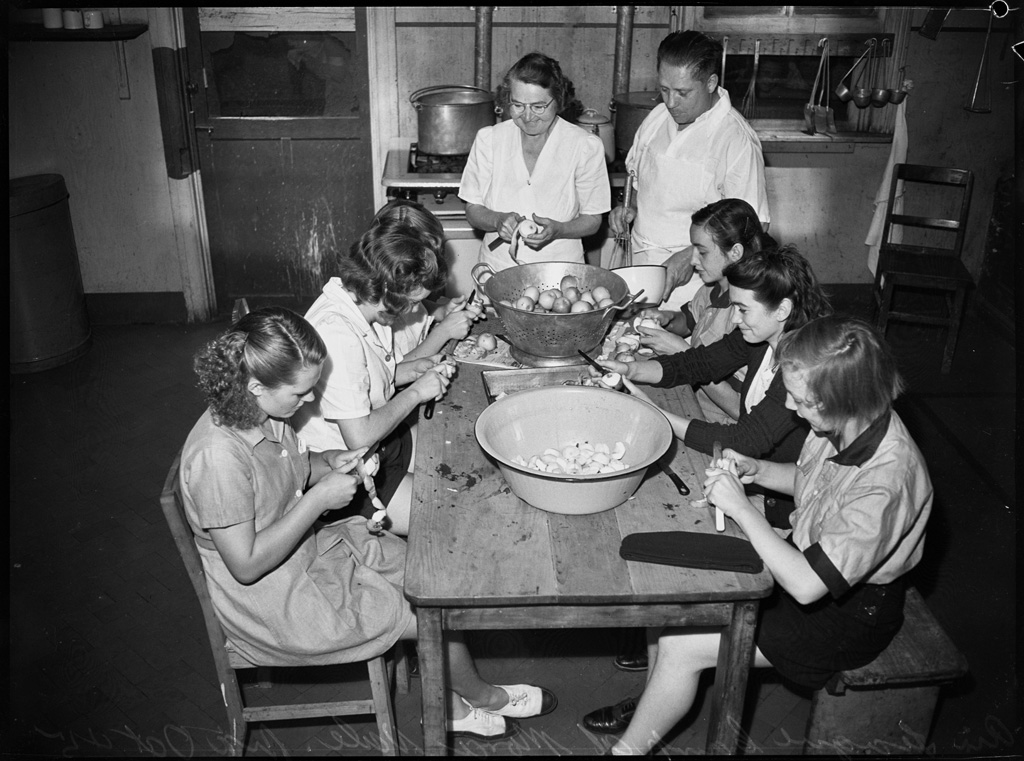
Air League comp at Mona Vale, October 6th 1945 / photographed by Ivan Ive, courtesy Mitchell Library, State Library of New South Wales and Courtesy ACP Magazines Ltd.
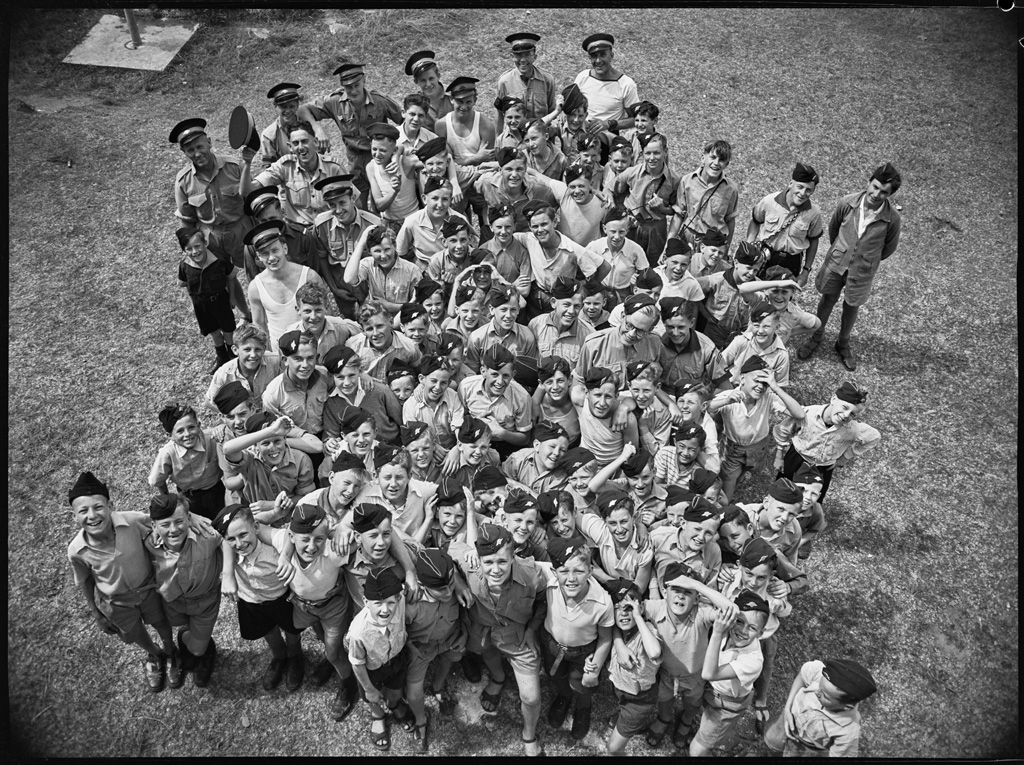
Air League comp at Mona Vale, October 6th 1945 / photographed by Ivan Ive, courtesy Mitchell Library, State Library of New South Wales and Courtesy ACP Magazines Ltd.
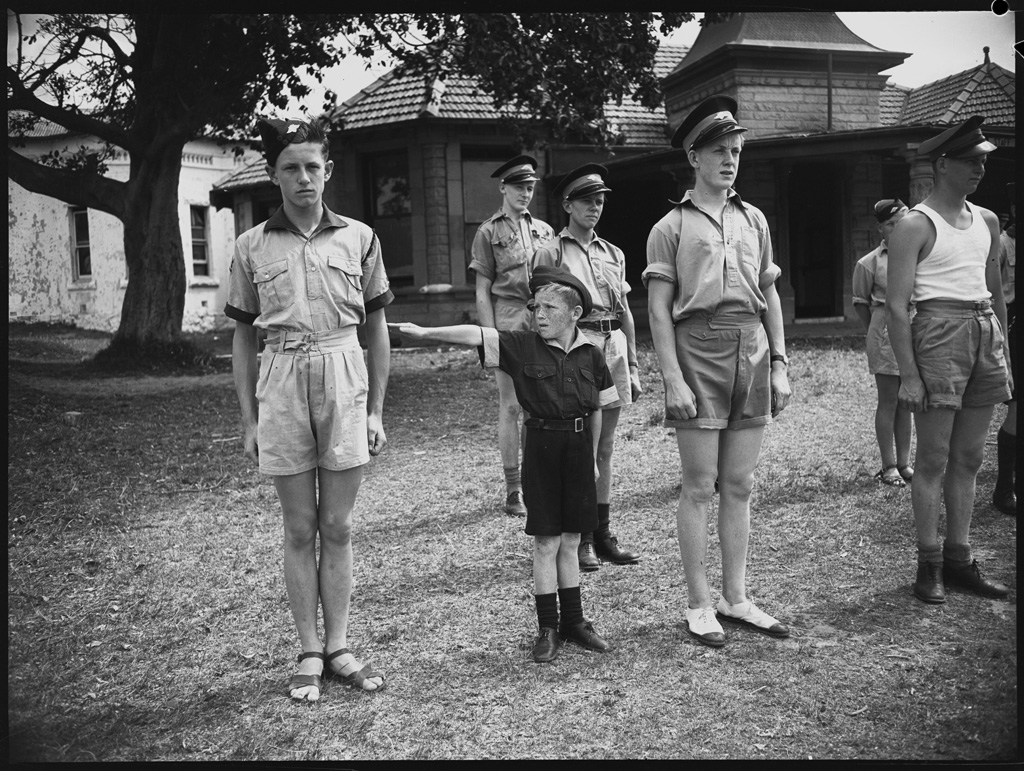
Air League comp at Mona Vale, October 6th 1945 / photographed by Ivan Ive, courtesy Mitchell Library, State Library of New South Wales and Courtesy ACP Magazines Ltd.
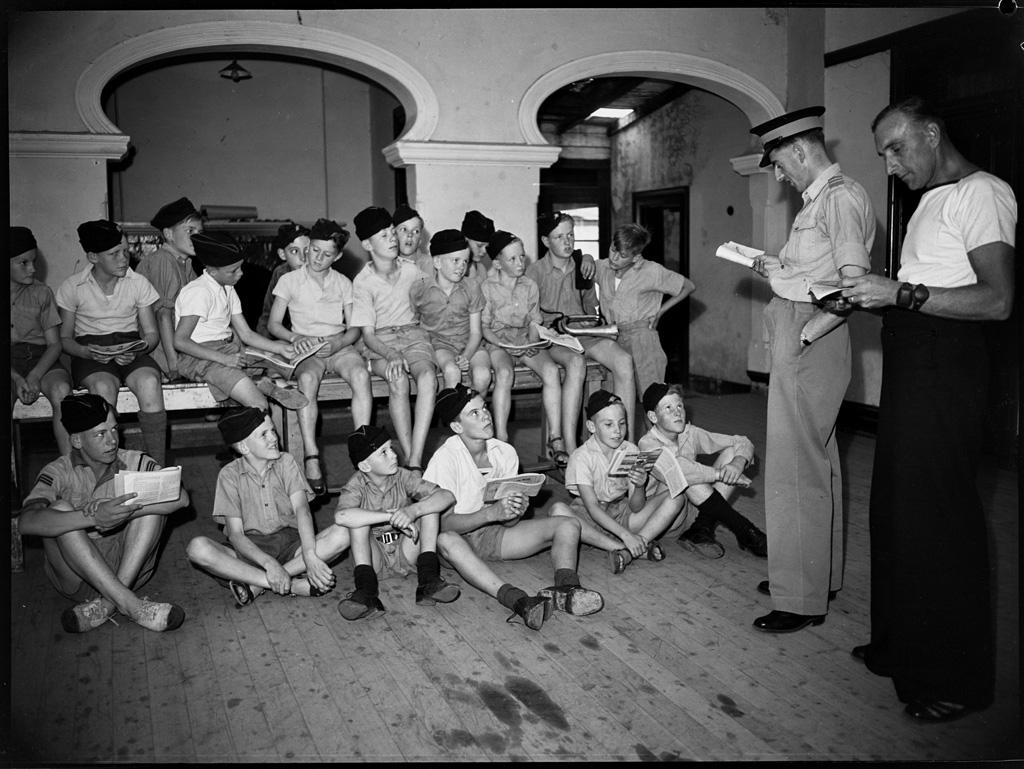
Air League comp at Mona Vale, October 6th 1945 / photographed by Ivan Ive, courtesy Mitchell Library, State Library of New South Wales and Courtesy ACP Magazines Ltd.
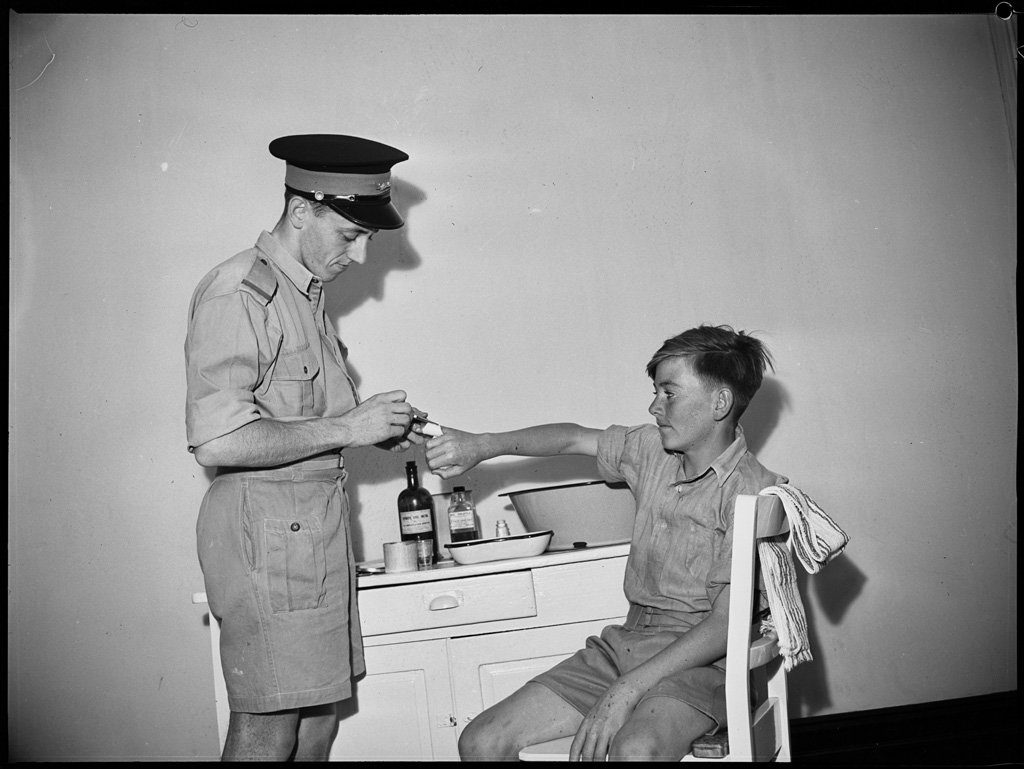
Air League comp at Mona Vale, October 6th 1945 / photographed by Ivan Ive, courtesy Mitchell Library, State Library of New South Wales and Courtesy ACP Magazines Ltd.
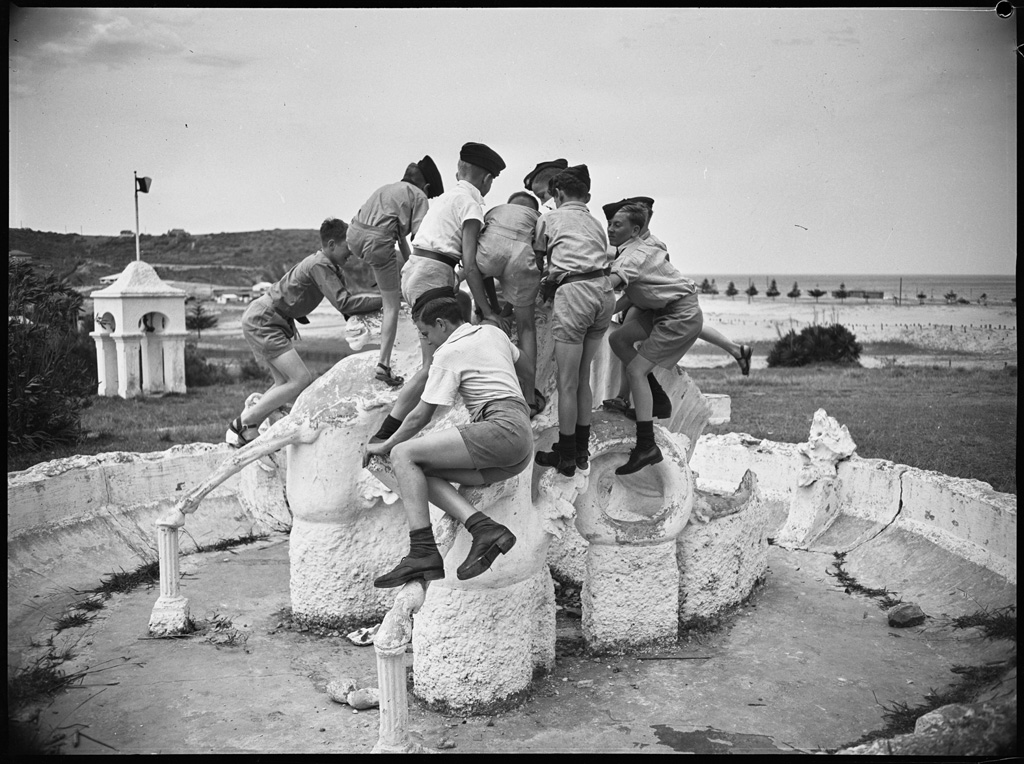
Air League comp at Mona Vale, October 6th 1945 / photographed by Ivan Ive, courtesy Mitchell Library, State Library of New South Wales and Courtesy ACP Magazines Ltd.
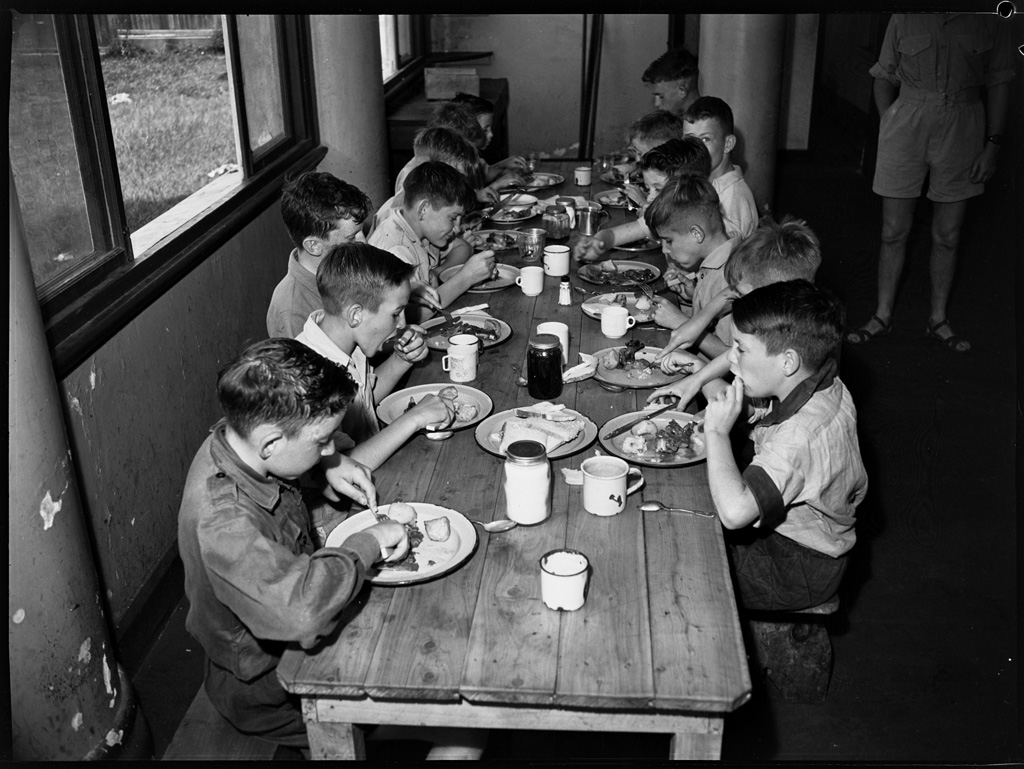
Air League comp at Mona Vale, October 6th 1945 / photographed by Ivan Ive, courtesy Mitchell Library, State Library of New South Wales and Courtesy ACP Magazines Ltd.
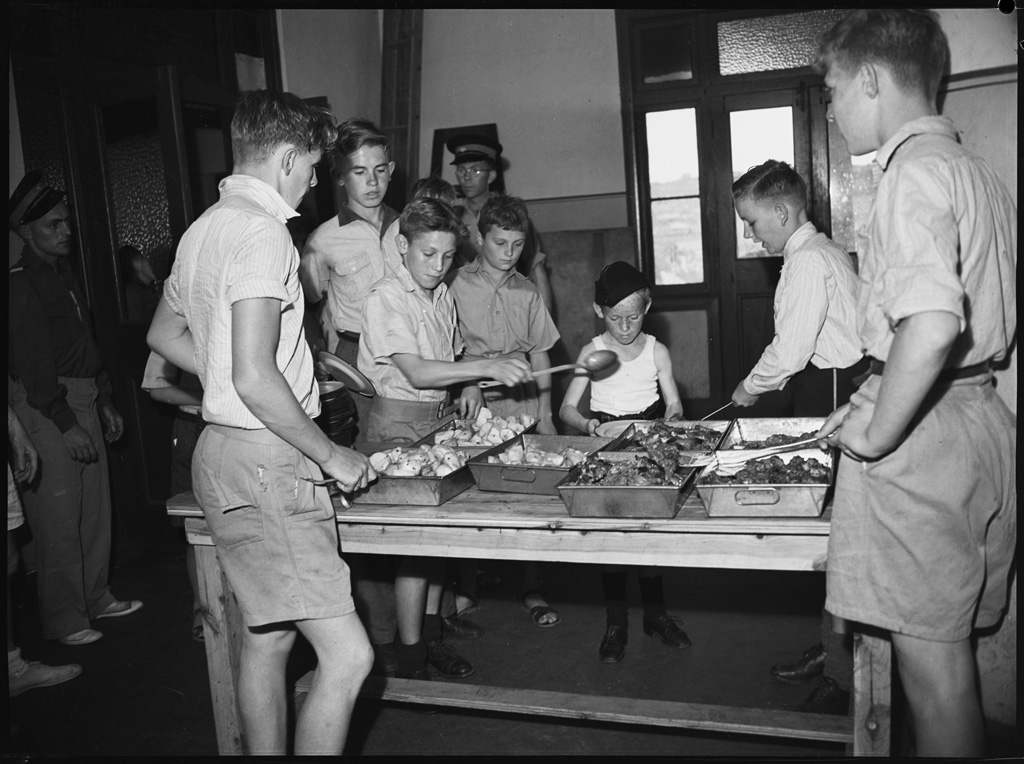
Air League comp at Mona Vale, October 6th 1945 / photographed by Ivan Ive, courtesy Mitchell Library, State Library of New South Wales and Courtesy ACP Magazines Ltd.
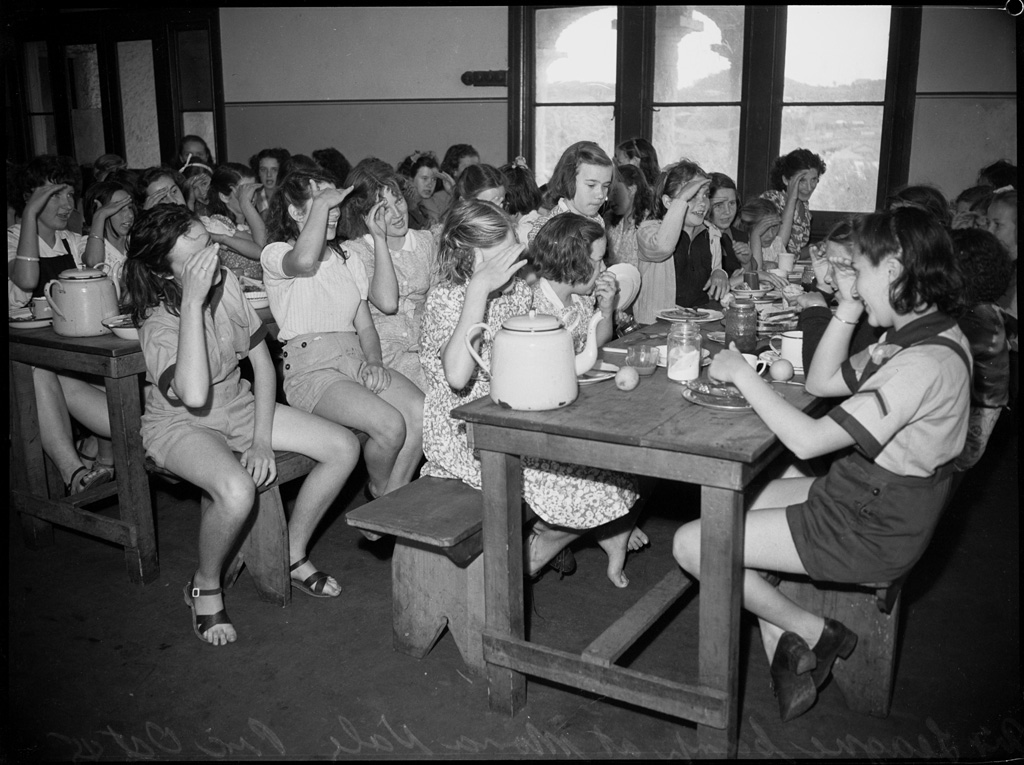
Air League comp at Mona Vale, October 6th 1945 / photographed by Ivan Ive, courtesy Mitchell Library, State Library of New South Wales and Courtesy ACP Magazines Ltd.
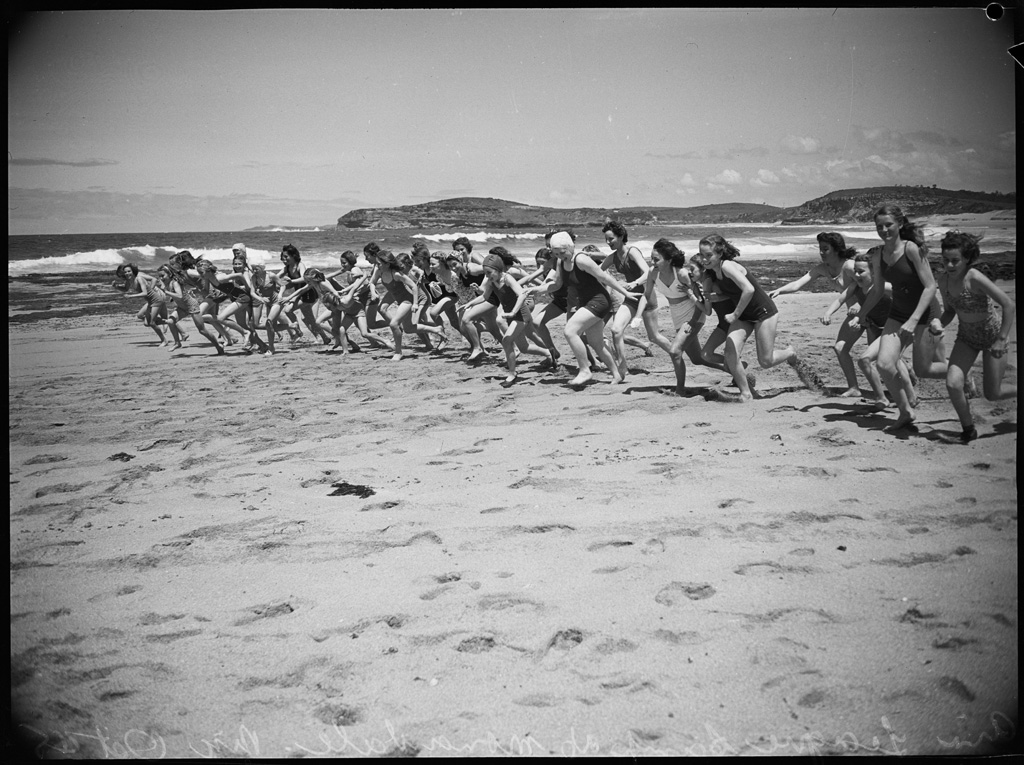
Air League comp at Mona Vale, October 6th 1945 / photographed by Ivan Ive, courtesy Mitchell Library, State Library of New South Wales and Courtesy ACP Magazines Ltd.
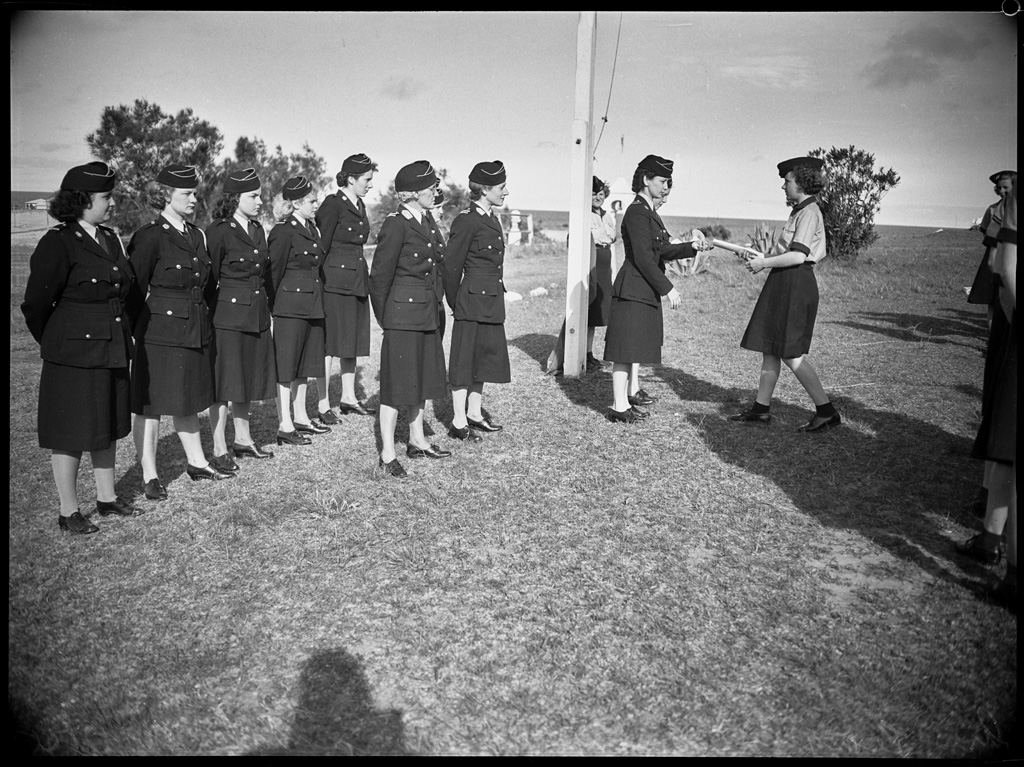
Air League comp at Mona Vale, October 6th 1945 / photographed by Ivan Ive, courtesy Mitchell Library, State Library of New South Wales and Courtesy ACP Magazines Ltd.
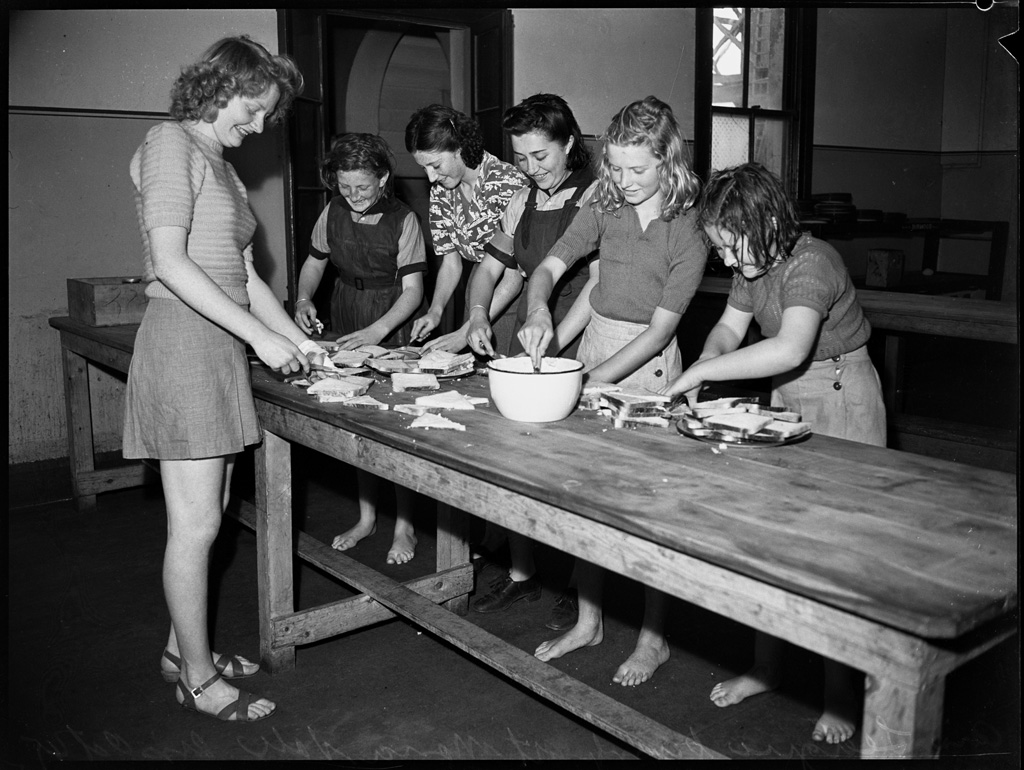
Air League comp at Mona Vale, October 6th 1945 / photographed by Ivan Ive, courtesy Mitchell Library, State Library of New South Wales and Courtesy ACP Magazines Ltd.
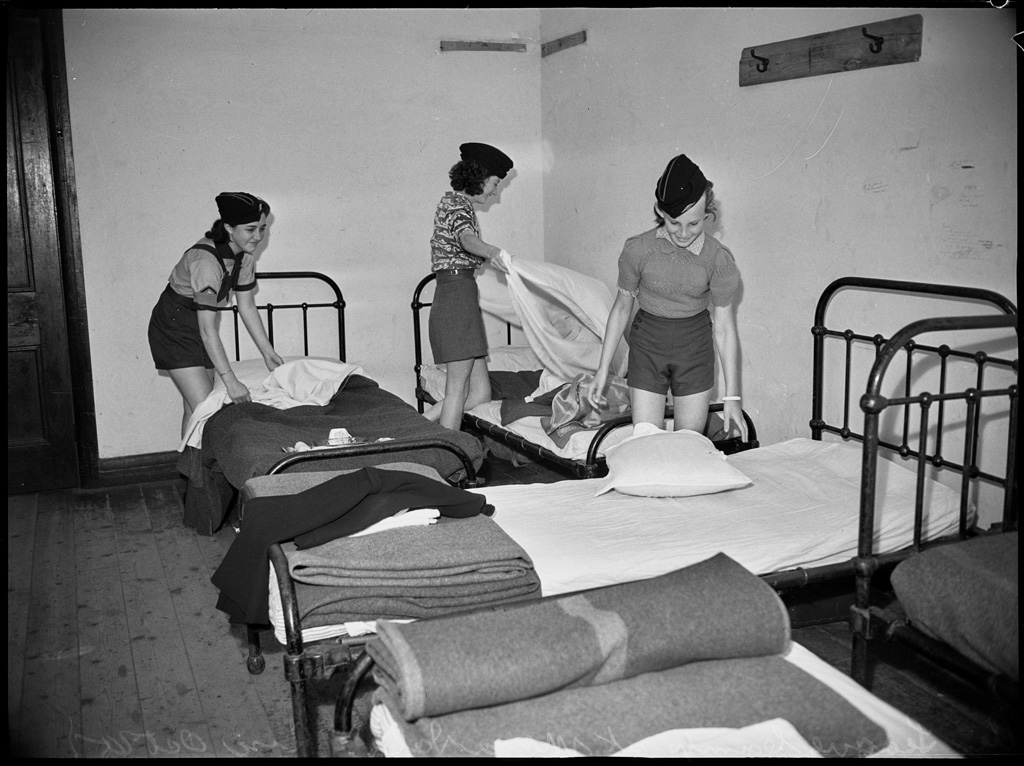
Air League comp at Mona Vale, October 6th 1945 / photographed by Ivan Ive, courtesy Mitchell Library, State Library of New South Wales and Courtesy ACP Magazines Ltd.
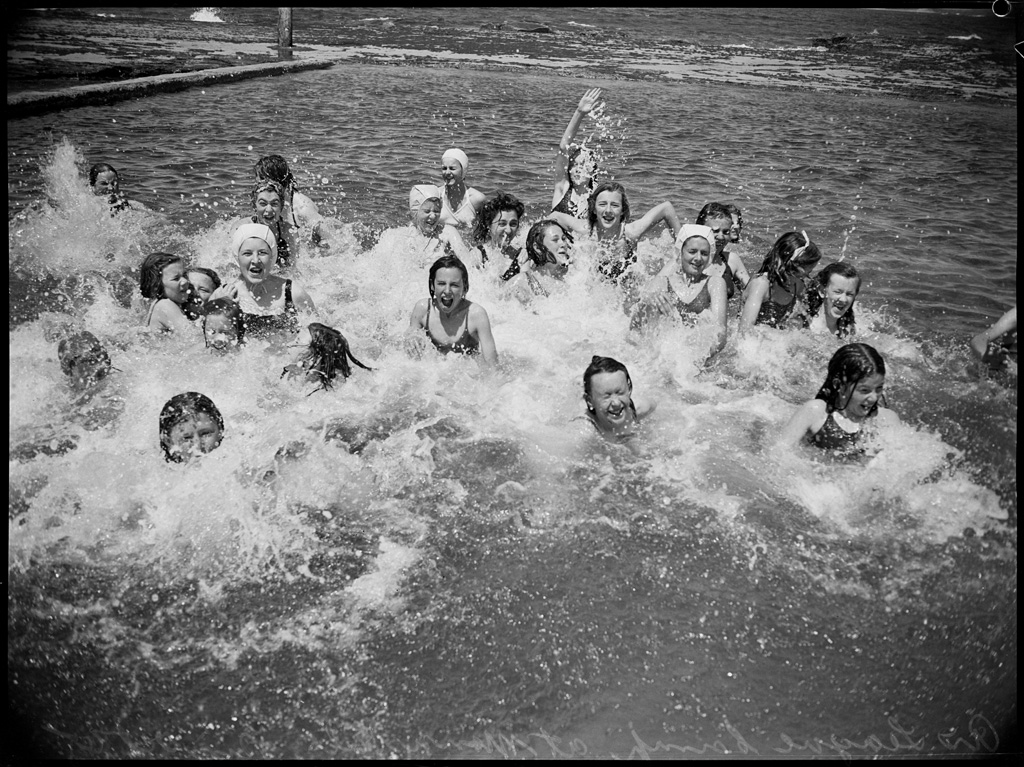
Air League comp at Mona Vale, October 6th 1945 / photographed by Ivan Ive, courtesy Mitchell Library, State Library of New South Wales and Courtesy ACP Magazines Ltd.
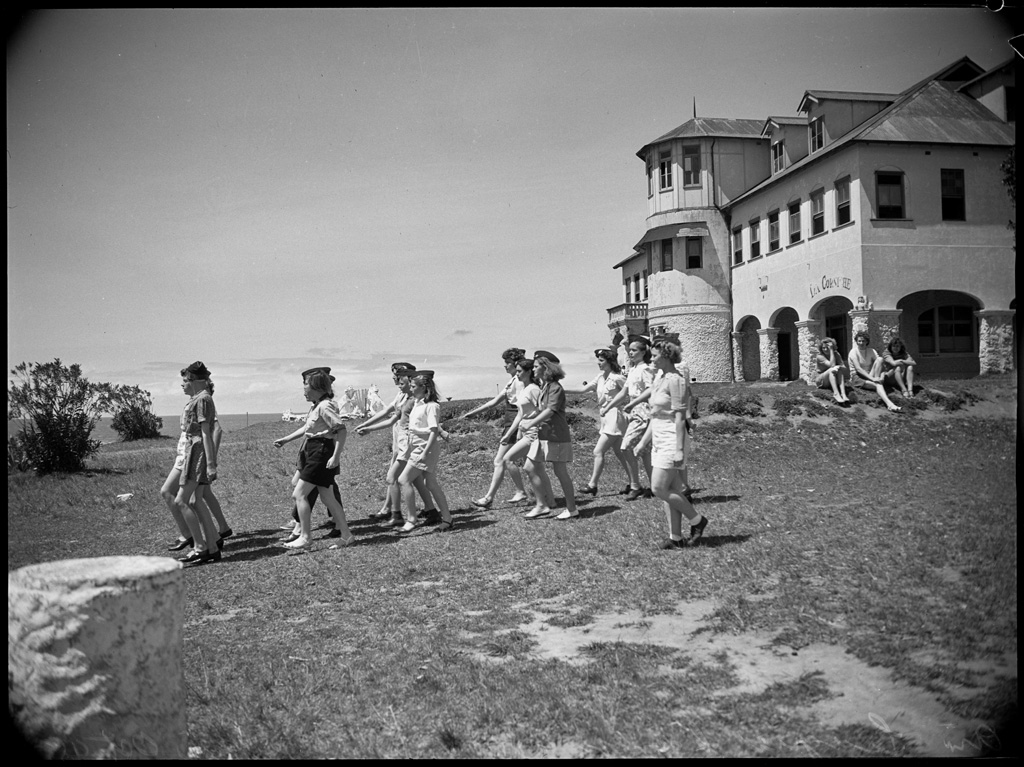
Air League comp at Mona Vale, October 6th 1945 / photographed by Ivan Ive, courtesy Mitchell Library, State Library of New South Wales and Courtesy ACP Magazines Ltd.
Girls' Air League Cup
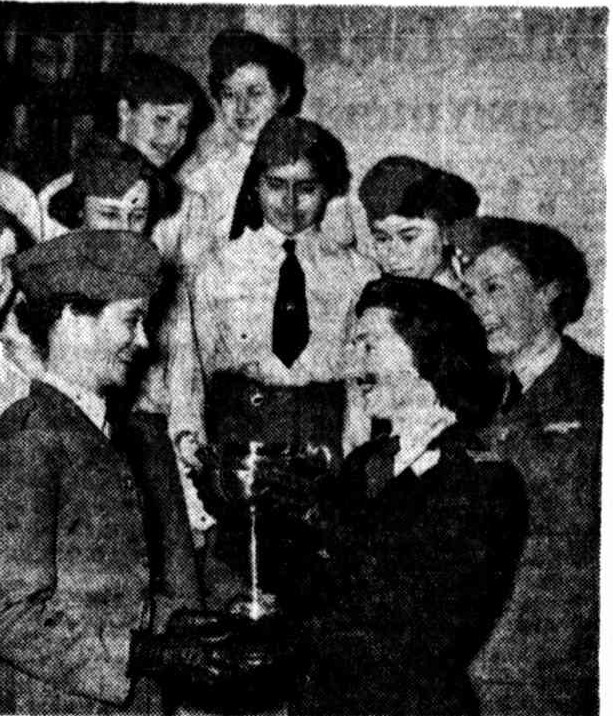
Girl cadets of an Essex Women's Junior Air Corps receive a silver cup from Miss Pauline Mellett (right), of the Australian Air League. The cup was a prize in a competition based on aviation training. Girls' Air League Cup (1951, December 14). Newcastle Morning Herald and Miners' Advocate (NSW : 1876 - 1954), p. 4. Retrieved from http://nla.gov.au/nla.news-article140326061
Keith John Townsend Robey grew up in Balgowlah and rushed outside to watch every aeroplane that passed overhead towards Mascot.
An excerpt from this article by John Laherty, a contributor to the aviation magazine Australian Flying, appeared in the March/April 2007 issue along with an oral history recorded by Rob Linn in 2005 provides;
On his 10th birthday his dad took him to the aerodrome, where they encountered an Avro 10. Peering over the threshold of the cabin door Keith saw two leather-clad pilots discussing their trip down from Brisbane. Seeing the youngster they invited him in and showed him the office. Keith was absolutely enthralled by all the dials, levers and knobs. It was there and then that he decided to make flying his lifelong career.
As Keith grew into his teenage years, war with Japan became increasingly imminent and his dad, a decorated original Anzac, asked young Keith which of the he wished to join. Keith told him that wanted to be a pilot, but there didn’t appear to be an organisation available to teach him. Keith’s dad discovered his son was right, gave it some thought and discussed it with his returned servicemen mates. A couple of weeks later they announced their intention to form the Australian Air League. Keith was cadet number one of the first squadron (Manly).
Keith went on to win a small scholarship from the Air League and at 17 commenced flying training with the Royal Aero Club of NSW at Mascot. He achieved his Advanced A Licence on the day before war was declared.
Keen to enlist in the RAAF as an instructor he was initially knocked back because of a constricted nostril. He promptly had surgery to correct it and nine months later was accepted under the Empire Air Scheme. He did his basic training at Temora and later Point Cook where he was selected for multi-engined aircraft training and went to Bairnsdale where he trained for maritime reconnaissance.
His war service was wide and varied, flying mostly Avro Ansons in anti-submarine operations and escorting coastal shipping. Later he was posted to WA and flew bombing missions in Indonesia and Papua New Guinea in B24 Liberators.
Demobbed in 1946, Keith found work as an instructor and charter pilot adding more types to his already impressive list of endorsements. He worked tirelessly for GA and formed the Association of Commercial Flying Organisations (later the General Aviation Association) and the Bankstown Airport Chamber of Commerce. Keith was President of both these organisations.
He was later the CFI for the Illawarra Flying School, a post he held for 18 years while he oversaw its development into the largest commercial flying school in Australia.
Today there are few people in the general aviation arena that can boast Keith Robey’s statistics. With over 31,000 hours in more than 110 types, he is one of the most experienced CFIs in Australia – if not the most! This man has clocked up the majority of this time in the right hand seat of single-engined aircraft in blocks of an hour or two at a time! That’s the equivalent of flying fours hours a day, every weekday for 31 years!
These days, in semi-retirement, Keith is the patriarch of the `Flying Robeys’ – which includes his wife Senja and son Chris, both of whom are also instructors at Sydney’s Hoxton Park airport. Senya and Chris, with 11,000 hours each, have, with Keith, over 100 years of flying experience. Keith and Senya were both admitted as Master Pilots to the Guild of Air Pilots and Navigators; a first for a husband and wife team.
In 1967 Keith was named Australian Flying’s `Man of the Year’ and was awarded an MBE for services to general aviation in the 1970s.Flying training is a special kind of job – and it takes a special kind of person to do it well. That’s Keith Robey in a nutshell.
Keith John Townsend Robey was a senior executive of one of Australia's largest general aviation companies, Ansett. Keith was also known as a well-respected aviation feature writer for Aircraft magazine, specialising in flight testing of aircraft and contributed to Australian Aviation History and was a big supporter of the Australian Aviation Museum. He also taught people and was known for his gentle manner and generous spirit. In 1954 he married Senja Raymond Havard and they had children and grandchildren.
In the New Year Honours announced on January 1st 1967 he was named an MBE - Citation; ''President - Commercial Flying Organisations''.
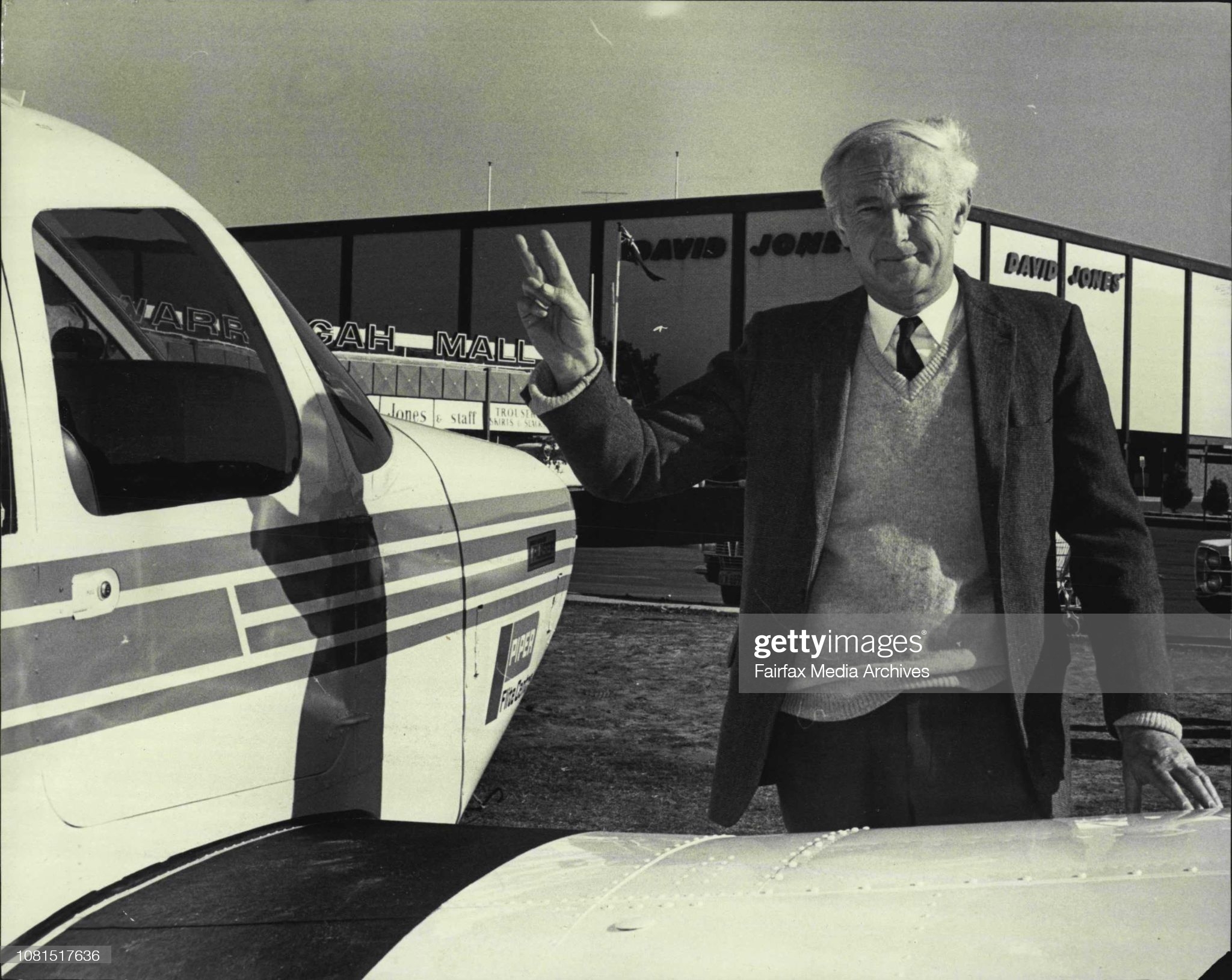
Demonstration flight to Warringah Mall. A Piper light aircraft in front of Warringah Mall shopping centre. Keith Robey, 50, pilot from Piper Flite Centre, who landed in Curl Curl area this morning. October 13, 1972
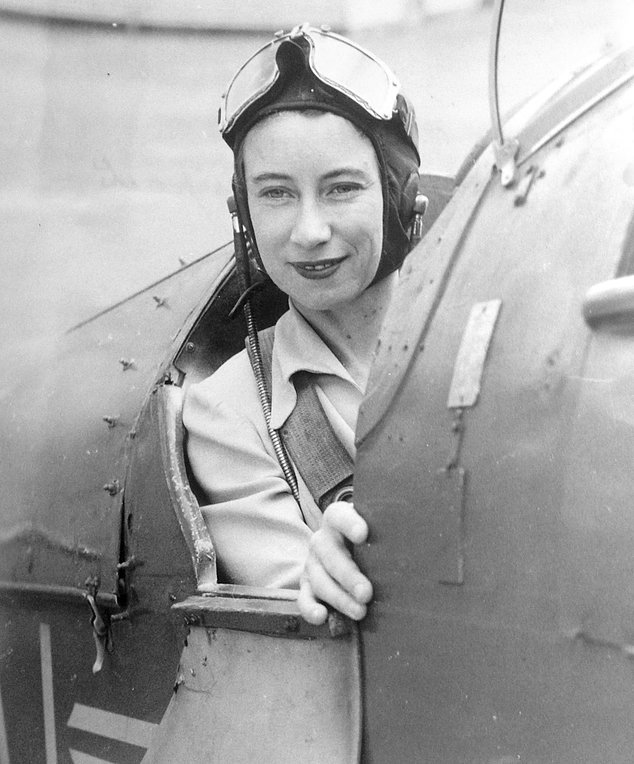 Senja was herself a pilot. Born in Sydney on 25 January 1927, Senja Robey (née Havard) says her interest in aviation was piqued when her father, a physics teacher, started the Air Training Corps Flight out of Sydney Technical High. He would bring home charts and maps for aircraft identification. Then, while she was attending North Sydney Girls High during World War II, the school held a dance for fourth year girls and invited boys from Air Force House. By the time she matriculated in 1943, the seeds had been firmly sown.
Senja was herself a pilot. Born in Sydney on 25 January 1927, Senja Robey (née Havard) says her interest in aviation was piqued when her father, a physics teacher, started the Air Training Corps Flight out of Sydney Technical High. He would bring home charts and maps for aircraft identification. Then, while she was attending North Sydney Girls High during World War II, the school held a dance for fourth year girls and invited boys from Air Force House. By the time she matriculated in 1943, the seeds had been firmly sown.
The following year she started work at de Havilland Aircraft Company at Camperdown in the Costing and Accounts department. It's likely she knew fellow lady flier Nancy Ellis. After 18 months, it moved to Botany and then later out to Bankstown where the Mosquitos and Vampires were being produced. Her first air experience was as a passenger on a test flight in a prototype de Havilland Drover with World War II ace pilot Brian ‘Blackjack’ Walker.
In 1949, Senja Robey applied to join the Royal Aero Club of New South Wales and in March of that year, began her flying training. She flew solo one month later and obtained her Private Pilot Licence (No. 5273) in September. At the time, Senja was earning £3 a week at de Havilland and a “dual” with an instructor cost 3 guineas an hour. Solo cost £1/18/3. She worked overtime on Thursday evenings and Saturday mornings to get the extra money.
Senja begun her flying training on DH82 Tiger Moths at the Royal Aero Club of NSW. In 1949 Senja was also invited by Nancy Bird-Walton to attend a meeting of women pilots as Mascot and she became a founding member of the Australian Women Pilots Association (AWPA) twelve months later.
In 1962 she obtained her instructor rating and began instructing at the Illawarra Flying School at Bankstown where Keith was the Chief Flying Instructor. She later started her own charter and aerial photography company and was also a partner, flying instructor and charter pilot at Robey Air and instructor with Phoenix Aero Club located at Camden, NSW.
During her many years of flying Senja mentored thousands of pilots and accrued almost 14,000 flight hours. She was awarded the British Empire Medal (BEM) in 1976, was inducted into the Australian Aviation Hall of Fame in 2014 and in 2019 was awarded the Col Pay Award for a Lifetime of Service to General Aviation. (Right: Senja)
A few insights into Keith's work from the pages of the past:
PLAN TO FOSTER YOUTH FLYING ASSOCIATION
A new flying association, to encourage light aircraft flying among Australian youth has been formed.
It is called the Association of Commercial Flying Organisations of Australia. Besides fostering flying as a hobby for young people the association will help the development of commercial flying schools and promote aerial work and charter operations In all States.
The Department of Civil Aviation has assured the newly-formed association of its support. Light air-craft commercial operators throughout the country are backing it.
"Private flying is fast becoming the new hobby among Australia's young men," said the president of the association, Mr. Keith Robey.
ADVANTAGES
"Through the association, we hope to make more popular light aircraft flying and operations. "And we hope to show our youth the advantages of a hobby that can have wide practical advantages.
"We especially want to offer the Australian public and industry an ever-increasing charter and aerial work service.
"Flying schools, charter operators and aerial work ' fivers are promised a new deal. "Up to now, the small flying operator had had to battle on his own. "Now lie has an association to correlate the , interests of all popular ' commercial flying.'' PLAN TO FOSTER YOUTH FLYING ASSOCIATION (1959, March 18). The Biz (Fairfield, NSW : 1928 - 1972), p. 19. Retrieved from http://nla.gov.au/nla.news-article189926369
Reliability Test For Planes
Thirty light aircraft will take part in a reliability test organised by the Illawarra Flying School at Bankstown on February 14. The chief flying instructor of the school, Mr. Keith Robey, gave details yesterday.
He said the 350-mile course would extend from Bankstown to Wollongong, Camden. Bankstown, Penrith, Newcastle and back to Bankstown.
Clubs taking part would include the Royal Aero Club of N.S.W., Royal Newcastle Aero Club, Kingsford-smith Aviation Service Flying School, Penrith Aero Club, South Coast Aero Club and Illa-warra Flying School.
Some private owners would also take part.
Mr. Robey said contestants would submit a flight plan for the course and estimate their times of arrivals at the various landing points.
The contestants would lose points for every minute they were ahead of or behind their estimated times of arrival. Reliability Test For Planes (1954, February 6). The Sydney Morning Herald (NSW : 1842 - 1954), p. 13. Retrieved from http://nla.gov.au/nla.news-article18408295
Airport control review
A special four-man review group has been appointed to look at airtraffic control and operational procedures at secondary airports in Australian capital cities.
Announcing the formation of the group in a statement yesterday, the Minister for Transport, Mr Jones, said the review would be directed initially toward Bankstown Airport, Sydney, but its investigation would later cover others.
The chairman of the group would be the director of Papua New Guinea's civil aviation agency, Mr J. E. Schofield. Other mem. bers would be the general aviatibn operations manager of Ansett Airlines, Mr Keith Robey, a Sydney businessman, Mr Jim Minahan, and the assistant secretary (operational services) of the Department of Transport, Mr Keith Leonard.
.The review would begin in mid-June in Sydney, and was expected to take about two months. It was appropriate that there should be a full review of operational and' air-traffic control procedures to ensure their suitability to present and future air traffic circumstances.
The last detailed review had been completed in 1970-71; Bankstown Airport handled 278,907 aircraft movements last year, 3.000 more than in the previous year. Moorabbin Airport, Melbourne, handled 245,329 movements in 1974. IN BRIEF (1975, June 3). The Canberra Times (ACT : 1926 - 1995), p. 3. Retrieved from http://nla.gov.au/nla.news-article110640481
Japanese group flies in
Fourteen Japanese, most of them qualified pilots, flew into Canberra yesterday afternoon in a hired fleet of six Piper Cherokees.
Their flight from Sydney was generally without incident, although there was something of a language barrier between aircraft and control towers.
The Japanese visitors, most of them presidents and vice-presidents of Japanese companies, are here on holiday.
They arrived in Sydney by commercial aircraft on Wednesday, and fly on to Melbourne tomorrow. Alter flying to Hay they will then return to Sydney and leave for home, again by commercial aircraft, on January 4.
The fliers, who include two small children and one woman pilot, Miss Kazuyo Masuda, were accompanied on yesterday's flight by an interpreter, and by Mr Keith Robey, operations manager of Ansett General Aviation, and his wife. Japanese group flies in (1977, January 1). The Canberra Times (ACT : 1926 - 1995), p. 4. Retrieved from http://nla.gov.au/nla.news-article110833078
Keith Robey passed away peacefully on May 9th, 2013, aged 91. Senja passed away April 14th, 2020, aged 93. Keith and Senja's contributions to aviation in Australia, particularly their care for and inspiration of younger people, are what make our civil aviation and our RAAF so great today.
''They were always looking out for younger people'' one biographer stated.
World War II took its toll as many of the Officers went into the services and at the end of hostilities, felt that they had experienced more than enough of wearing uniforms and discipline and hence many Squadrons closed, although that didn't stop thousands of cadets coming to Mona Vale or stop the Australian Air League from continuing. There are still around 76 active Squadrons and more squadrons continue to open. The founders of the Australian Air League saw the prosperous future for aviation and the Australian Air League has become part of that future being recognised in the aviation industry and Armed Services. Over the years it has been held in high respect by the leaders of the Nation and from the early stages of its history, Governor Generals of Australia have been Patron-In-Chief of the Australian Air League.
On April 21st 2009, the Civil Aviation Safety Authority granted the Australian Air League official use of the Australian Civil Aviation Ensign to recognise the organisation's significant contribution to aviation in Australia. The Australian Air League paraded and flew the flag at the organisation's 75th Anniversary Review in Sydney on September 26th 2009. It is the first time the honour of flying the flag has ever been granted to any other organisation outside of the Civil Aviation Safety Authority's jurisdiction.
Today the Australian Air League is still active in NSW, the ACT, Victoria, Queensland, South Australia and is still expanding. The Manly Unit has a great membership and undertakes wonderful activities in Hinkler Park, still, as well as taking members to Camden for 'gliding' fun.
The Australian Air League remains a youth organisation for boys and girls aged from 8 years which encourages an interest in aviation as a career or as a hobby for the youth of Australia. The organisation is entirely self-funding and is staffed by volunteers who give their time generously to achieve its goals. The Australian Air League has no political, racial or religious connections. It's about Fun, Friendship and Flying!
The aims and objectives of the Australian Air League include:
- To promote and encourage the development of Aviation in the Youth of Australia
- To promote good citizenship
- To promote ingenuity and resourcefulness of its members
- To develop the physical and mental abilities of its members
.png?timestamp=1616655331819) The League’s motto remains “A Vinculo Terrae” translates into “Free from the bonds of the Earth”. This motto contains the very essence of flight into space.
The League’s motto remains “A Vinculo Terrae” translates into “Free from the bonds of the Earth”. This motto contains the very essence of flight into space.
Girls and Boys from the age of 8 years through to 18, are eligible to join a Squadron as a cadet and participate in the weekly meetings and regular activities. On reaching the age of 18 many cadets choose to remain in the organisation as Officers or Instructors, with some members having life-long associations with the Air League.
As a not for profit organisation, the Australian Air League relies on the help of a network of volunteers to carry out the various tasks which need to be fulfilled in order for the organisation to exist.
Adults who have a passion for aviation, care about the welfare of our youth and would like to contribute to Australian society can join the Air League as Warrant Officers. Under the guidance of a structured training programs, adults can progress through the organisation and gain confidence, knowledge and skills. Aviation experience is not necessary as training is available. During training, members learn the basic requirements to become an Officer and a member of the Air League, and get to know other members and their positions within the Australian Air League.
Members of the Australian Air League attend Squadron parade nights once a week for approximately two hours, where they take part in a variety of interesting activities. These include ceremonial drill, physical training, model aircraft building, and aviation theory classes, such as Navigation and Aircraft Engines. Training in First Aid, Life Saving, camp craft and a variety of other interesting subjects are also available.
Education classes have been provided for the benefit of members, including;
- Aero Engines
- Electronics
- Meteorology
- Navigation
- Photography
- Radio and Radar
- Semaphore
- Spaceflight
- Theory of Flight
- Flight Attendant
Members also have the opportunity to gain the AAL General Diploma, the AAL Aviation Diploma, and the AAL Gold Diploma by obtaining the selected amount of education badges the courses prescribes within a particular time period.
In addition to weekly Squadron parade nights there are several Parades and Reviews conducted in each State during the course of the year and nationally every two years. Several squadrons also have marching bands that compete keenly in competition, as well as take part in community events and special occasions such as ANZAC Day Parades.
Competition between Squadrons is very keen and to encourage this competitive spirit, a number of competition days are held each year. These include drill competitions as well as athletic and swimming carnivals at a Group level and inter-Squadron sport days at Wing level.
There are also social functions held by Squadrons and Wings including picnics and outings, hikes and fund-raising activities. In addition members are encouraged to take part in public activities such as helping in community projects, assisting in ANZAC Day and other local community parades and festivals.
Cadets are formed into Squadrons which take the name of their town or city or in some cases, region. Two or more Squadrons located in the same geographic region form a Wing, which carries the name of a famous Australian Aviator or of that region. A Group is the controlling State body and administers all Wings and Squadrons in their state.
The term Federal is used to describe the organisation at a national level. The Council of the Australian Air League oversees the functioning of the League and is responsible for setting policy and administering the rules of the organisation.
A Squadron consists of an Officer Commanding and other Officers who hold various ranks and selected appointments such as Drill, Education, and Physical Activities, Non-Commissioned Officers (N.C.O.’s) and Cadets.
Leadership training and discipline is an important aspect of the training and successful members can qualify for Non Commissioned Officer or Officer rank depending on their age and ability.
Cadets that show initiative and leadership skills can gain promotion as Non-Commissioned Officer’s (NCOs) following stringent training and examinations. Upon qualification and examination they become a Leading Cadet, then progress through the ranks, possibly even to Squadron Sergeant, the highest NCO rank in the Air League. Upon reaching adulthood, Cadets then can become Warrant Officers and undergo Officer Training.
Air Activities are encouraged throughout the Air League and flying, both powered and gliding, is an important part of the training syllabus. The Air League operates a very successful Air Activities Centre at Camden Aerodrome, which is fully staffed by volunteers mainly from the Aviation Industry who are dedicated to providing our young people flying at the cheapest rates available. In other states air activities are conducted in association with local flying training organisations who assist the Air League to provide air experience flights and flying training at competitive prices. Gliding is conducted through association with local gliding clubs and the Gliding Federation of Australia, and training and glider experience flights is available to all members.
In addition to flying training, the Air League holds regular air activity flying days where Squadron members are taken for joy flights and are introduced to aviation. Many Cadets have experienced their first flight at one of these days.
Aviation is a dynamic industry and the Australian Air League, sometimes called the Primary School of Aviation, is proud of the role that it has played for over 85 years in promoting aviation to young Australians and helping to make them better members of our society.
Find out more and get involved at: https://www.airleague.com.au/
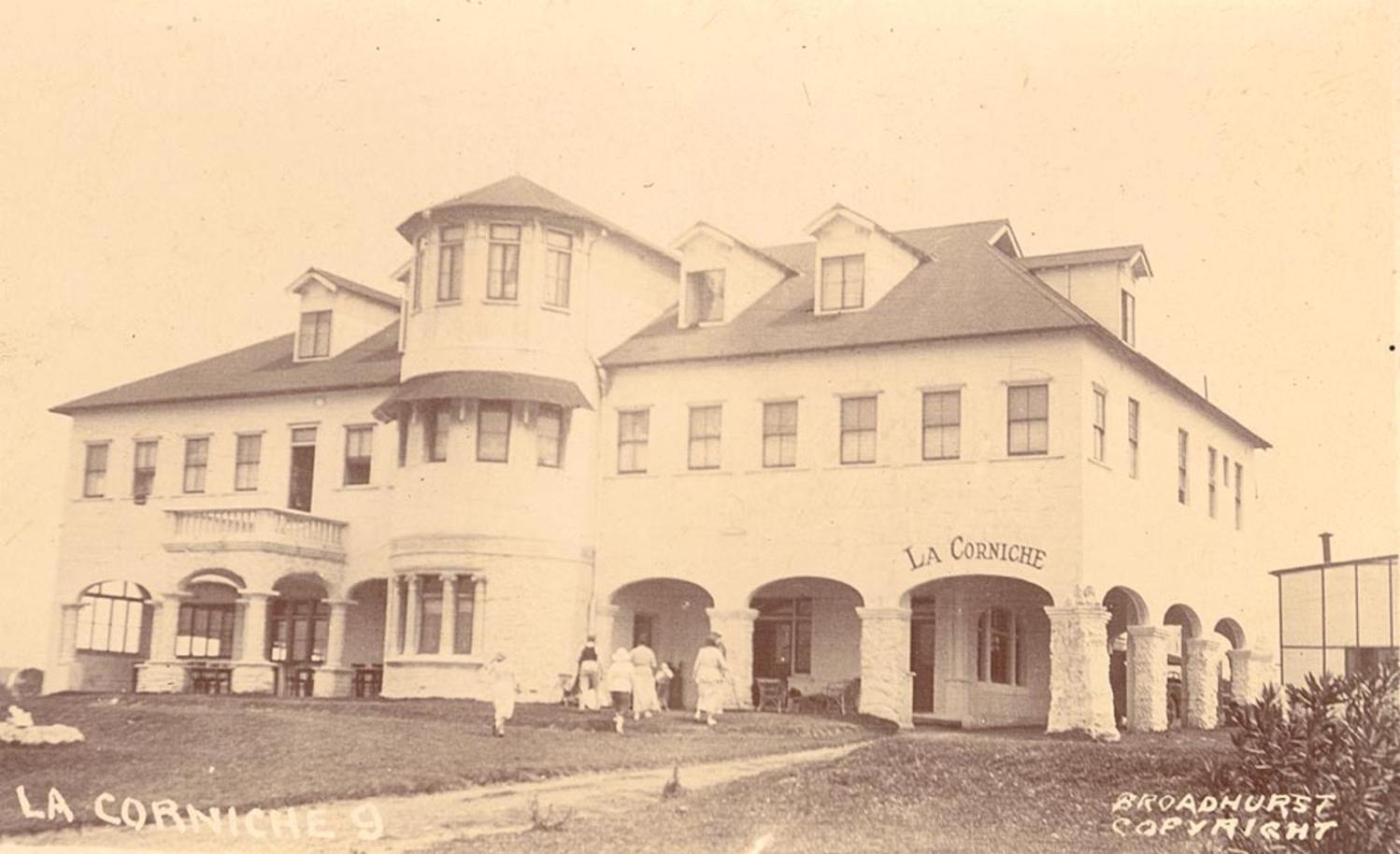
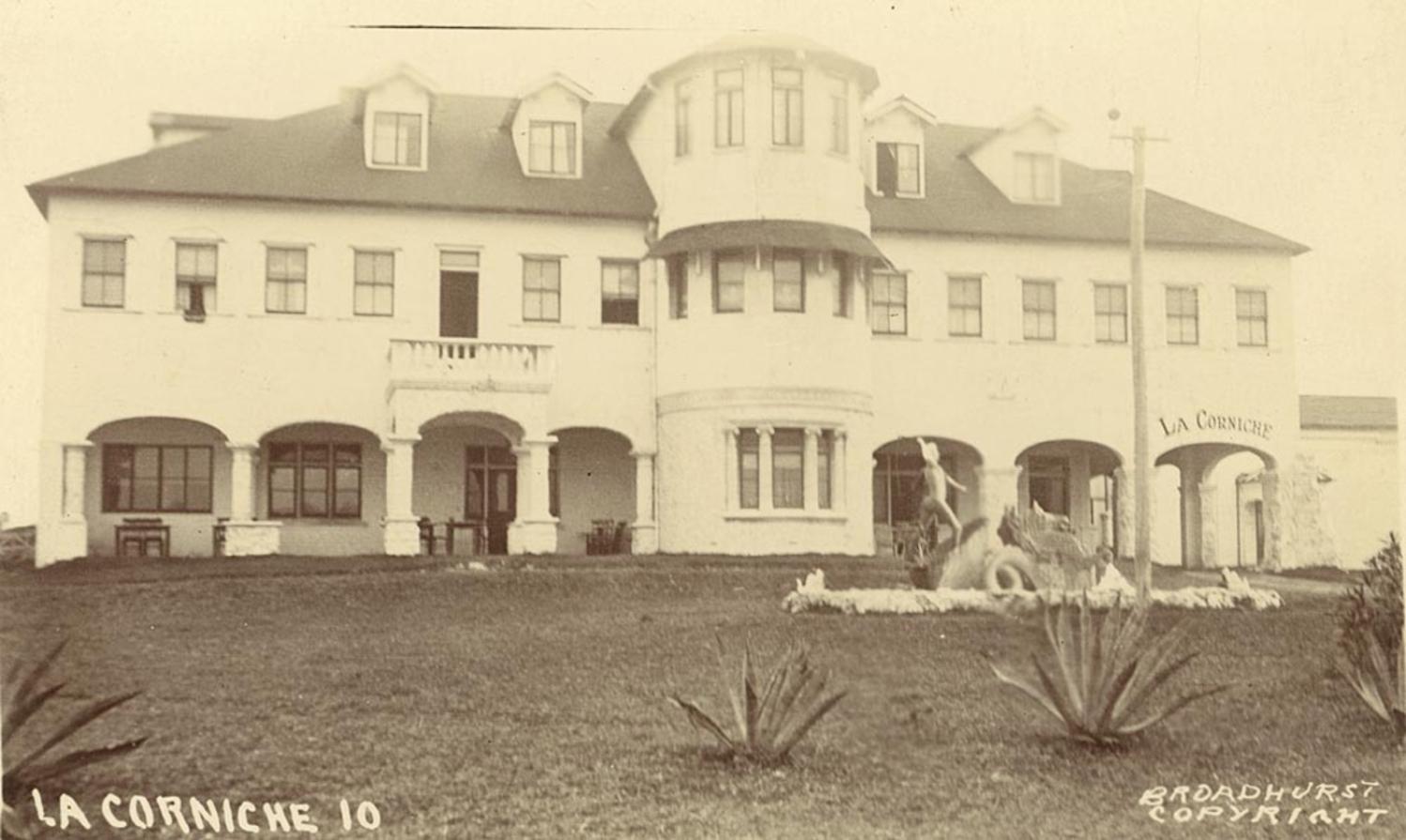
References - Extras
- TROVE - National Library of Australia
- Manly Library
- Australian Air League - Manly Squadron - AAL - https://www.facebook.com/Australian-Air-League-Manly-Squadron-AAL-190396518505244/ at: Hinkler Park - AAL Hall, Pittwater Road, North Manly
- La Corniche, Bayview
- The Oaks-Brocks Mansion-La Corniche
- Keith Robey interviewed by Rob Linn for the E.A. Crome aviation oral history project [sound recording]. Recorded on Feb. 23, 2005 at Georges Hall, N.S.W. Retrieved from: https://nla.gov.au/nla.obj-218650059/listen
- Senja Raymond, Australian Aviation Hall of Fame https://www.aahof.com.au/inductees/Senja-Raymond-Robey
- Pittwater Aviatrixes On The Eve Of The RAAF's 100th: A NSW Women's Week - Women Of Aviation Week Celebration
Horace Townsend Robey (1844 -1915)
Parents - Ralph Mayer (1809-1864) and Louisa Robey. His father was a merchant in Sydney from at least 1842. He served on Sydney Council (1844-1847) and in the Legislative Assembly of NSW (1858-1864).
Ralph Mayer Robey was born on January 8th, 1809, son of William and Elizabeth Robey, and was christened on February 12th 1809 at Bethesda Methodist Chapel at Shelton, Stafford, England. He married Mary Ann Leese, in England. After her death, he married Louisa Townsend (d.1889) of Cork, Ireland, at St Lawrence Church in Sydney on October 21st 1842. They had five sons and four daughters. He died on April 1st 1864 at Langton, Staffordshire, England, leaving considerable debts and a large family. One of his daughters, Anne Maria, married his business partner and future NSW Premier George Dibbs in 1857.
Ralph Robey, arrived in Sydney on the Larne on November 8th 1841. By 1843 he had a general fancy warehouse and ironmongery store at 427 George Street selling China earthenware and soft goods. He expanded his business to include importing, exporting and a shipping agency. By 1855, he was the Chairman of the Sydney and Melbourne Steam Packet Company and a shareholder in the Sydney Railway Company. Other positions he held were Director of Sydney Fire Insurance Company and, from 1858, the Australasian Steam Navigation Co. and the Newcastle Coal and Copper Co. From 1847 to 1854, he was the Chairman of Directors of the Australasian Sugar Co. In 1850 he promoted a company to grow sugar at Moreton Bay and in 1855 became an original shareholder and manager of Colonial Sugar Refining Company. In 1857, with the future NSW Premier George Dibbs, he set up a rival company but sold out to CSR in 1859. He invested in land and buildings in the County of Cumberland and had 20 pastoral stations in NSW and Queensland. From 1845 he lived at his Linthorpe Estate at Newtown and is commemorated by both Linthorpe and Robey streets in Newtown. He left for England in 1863 where he died a year later.
Children born in NSW:
ROBEY CLARA E 543/1843 V1843543 27A RALPH M LOUISA
ROBEY HORACE T 1549/1844 V18441549 30ARALPH M LOUISA
ROBEY FRANCES E984/1846 V1846984 31A RALPH M LOUISA
ROBEY LOUISA G1100/1847 V18471100 32ARALPH MLOUISA
ROBEY WILLIAM F 1739/1849 V18491739 44ARALPH M LOUISA
ROBEY CHARLES A 1040/1851 V18511040 37A RALPH M ELIZABETH
ROBEY WALTER G 1868/1852 V18521868 44A RALPH M LOUISA
ROBEY EVA E 2204/1856 RALPH M LOUISA GLEBE
ROBEY HENRY H 652/1860 RALPH M LOUISA SYDNEY
ROBEY SYDNEY G 2181/1861 RALPH M LOUISA SYDNEY
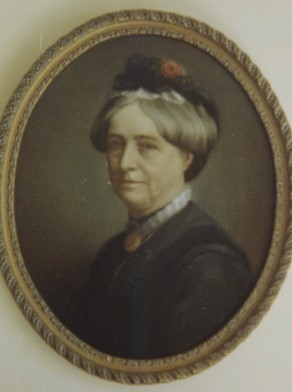
Louisa Robey nèe Townsend, wife of Alderman Ralph Mayer Robey, courtesy Mitchell Library, State Library of NSW
MR. HORACE T. ROBEY DEAD
WELL-KNOWN MANLY RESIDENT .
Mr. Horace T. Robey, one of the oldest residents' of Manly, died at his home, James-street, Manly, yesterday afternoon after a brief illness.
Deceased was a pioneer member of the local Bowling Club, and was one of the first to agitate for a tram from the Spit to Manly. He left a widow and five children; two sons, and three daughters. One of the sons. Dr. William Robey, is at present engaged in a military hospital in England, while the other, Lance-Corporal George Robey, has been recommended for the Distinguished Conduct Medal of conspicuous bravery at the Dardanelles. The funeral took place at Manly yesterday afternoon. The Rev. R. A. Harris was the officiating clergyman. MR. HORACE T. ROBEY DEAD (1915, August 8). The Sun (Sydney, NSW : 1910 - 1954), p. 4 (SUNDAY EDITION). Retrieved from http://nla.gov.au/nla.news-article221920759
office of Robey Hanson & Strong Realtors - Manly
Clifton Heights estate, Manly : 28 building sites in one of the finest positions in Manly / for auction sale on the ground, Saturday 21st March, 1908 at 3 p.m., Arthur Rickard & Co. Ltd., auctioneers, 84B Pitt St., Raine & Horne, Pitt St., Sydney, H.H. Robey, Manly, auctioneers in conjunction
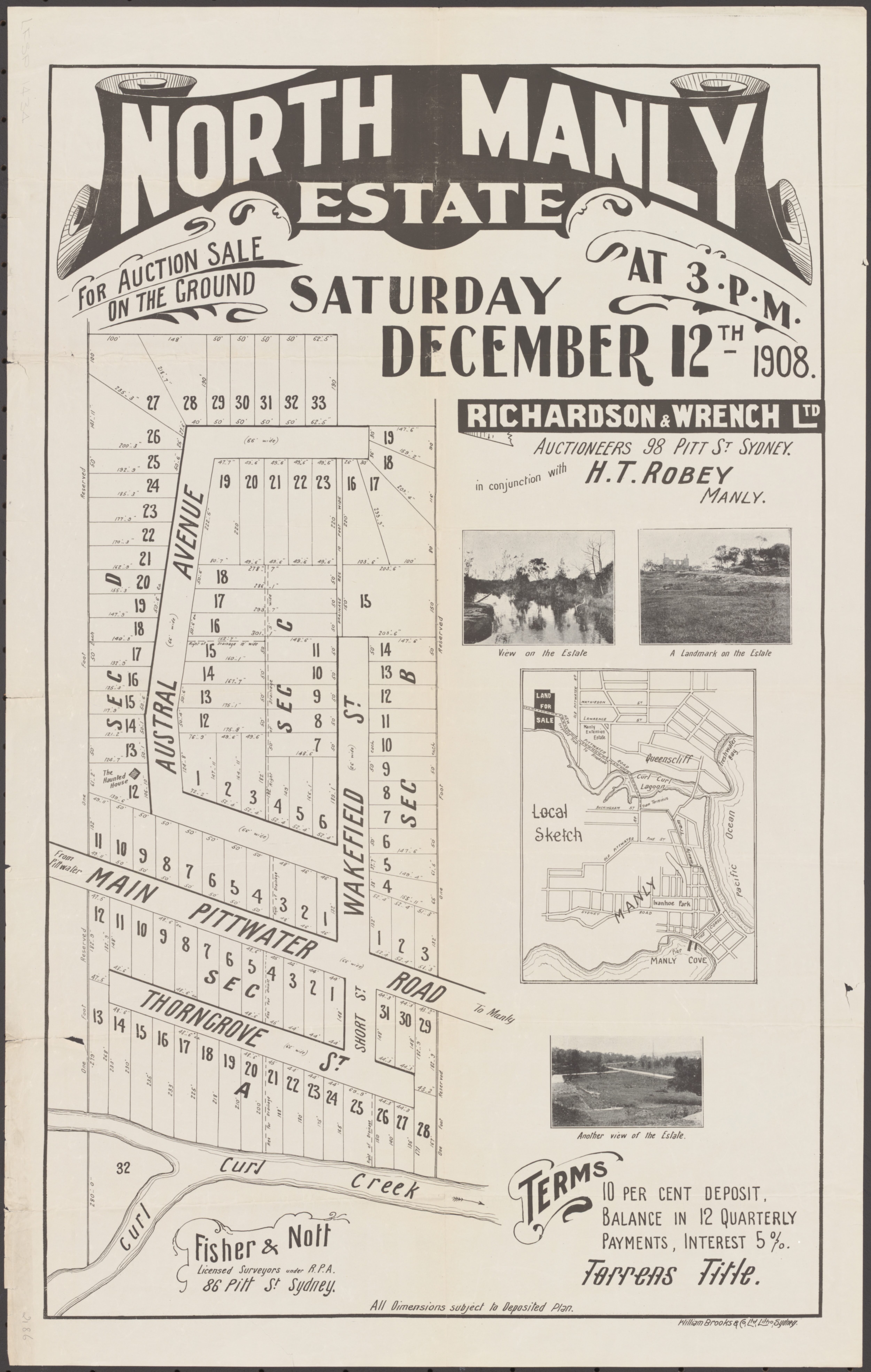
Richardson & Wrench & Robey, H. T & Fisher & Nott & William Brooks & Co. (1908). North Manly Estate for auction sale on the ground Saturday December 12th 1908 at 3 p.m Retrieved from http://nla.gov.au/nla.obj-230282547
MANLY.
There was another narrow escape from drowning in the breakers on Sunday morning last. A bather found himself suddenly in a treacherous spot, and was extricated with difficulty.
Many new buildings are projected in Manly. On the Corso the premises occupied for years by Messrs Butler Brothers have been pulled down and a new structure is being erected for Messrs Reid Brothers, the new proprietors, by Mr. F. Trenchard Smith, architect.
The final of the ladies' and gentlemen's double handicap in the croquet tournament was played on Monday, when Miss M Brown and Mr A Robey won easily from Mrs Sadler and Mr. Royle. The final in the ladies and gentlemen's double championship was played on Tuesday, when Mrs Lough and Mr Tompson beat Mrs Robey and Mr G. Robey Mrs H T Robey was the organiser of this tournament, and Mr F P Tompson was handicapper. MANLY. (1903, May 7). The Sydney Morning Herald (NSW : 1842 - 1954), p. 4. Retrieved from http://nla.gov.au/nla.news-article14558420
Marriage:
ROBEY—TOWNSEND—Oct. 18, by the Rev. C. McFetridge, Horace Townsend Robey to Violet Florence Townsend. Family Notices (1880, October 27). The Sydney Morning Herald (NSW : 1842 - 1954), p. 8. Retrieved from http://nla.gov.au/nla.news-article13471241
ROBEY—TOWNSEND—Aug. 18, by the Rev. C. McFetridge, Horace Townsend Robey to Violet Florence Townsend. Family Notices (1880, November 4). The Sydney Morning Herald (NSW : 1842 - 1954), p. 11. Retrieved from http://nla.gov.au/nla.news-article13485664
NSW BDM's - children
ROBEY WILLIAM CHRISTOPHER L10263/1883 HORACE T VIOLET F MANLY
ROBEY HORACE G T11934/1884 HORACE T VIOLET F MANLY
ROBEY VIOLET 13061/1886 HORACE T VIOLET F MANLY
ROBEY ATWELL M 13062/1886 HORACE T VIOLET F MANLY - Atwell Manly Townsend Robey
MANLY RENTALS.
Mr A Robey, in a letter to the Editor of the "Herald," challenged the recent statement by the Mayor of Manly that the rents in a great number of permanent tenants had been Increased by amounts varying from 20 Percent to 50 per cent. Mr Robey said that his experience as director of a firm of real estate agents was that the number of dwelling rentals increased was less than 1 per cent Manly was short of accommodation for permanent tenants, and there was a ready market there for 200 to 300 additional homes at rents ranging from 25/ to 40/ a week. MANLY RENTALS. (1933, November 8). The Sydney Morning Herald (NSW : 1842 - 1954), p. 10. Retrieved from http://nla.gov.au/nla.news-article17022486
Pauline St. George Mellett (May 19, 1920 To July 13, 2008)
Parents - George and Mary L
Pauline St George Barnes (married Laurie Roy Barnes in 1964 - registered at St Leonards) was the fifth woman to be appointed as a commissioner of the Australian Conciliation and Arbitration Commission, a position she held from July 1st 1978 until her retirement in 1985. Although she had completed the Barristers' Admission Board course, she did not practise as a barrister after she was admitted to the New South Wales Bar. Instead, she worked as an industrial officer in local government and shire organisations before becoming a research officer with the Association of Professional Engineers (Aust.). An involved member of the Women Lawyers' Association of New South Wales, she was honorary secretary and also convenor of the Association's Research Committee. - from Trailblazing Women website and http://www.airc.gov.au/images/newsletter_images/issue4/WelcomeBarnesC.pdf
Over 500 Australians attend two Palace parties
LONDON: Most debs and young women chose dresses of fine cotton — a top-fashion material just now — for the Buckingham Palace garden parties today and next Thursday.
Royal dressmaker Norman Hartnell predicted most-worn colors would be lilacs, greens, white and greys, although attending French women always prefer darker shades. Many Australian women have chosen large hats and big-skirted dresses, but bad weather may en-force last-minute changes. Order of the day for men is top hat (experts say greys will outnumber black silk by two to one) and morning dress. About 6000 guests will attend the two parties on July 17. Nearly 500 are Australians. Today's party was held on the Palace lawns, with afternoon tea served in huge marquees. Special traffic arrangements were made to prevent jams along The Mall leading to the Palace. Lady White, wife of the Australian High Commissioner, cancelled her plans to attend because of a recent accident. Mrs. Tully, wife of Mr. J. M. Tully, the Agent-General for NSW, wore a peacock green shantung dregs with a big skirt. Her hat was gold-colored straw, and other . accessories black. Mrs. Mrs. Strathmore Playfair, of Woollahra, chose an all-black two-piece from Paris,, which has an intricately pleated taffeta skirt. Her large hat is also black. A quilted black and white check dress with black accessories was worn by Mrs. Peter Meagher of Temora. She carried a long-handled royal-red umbrella. Misses Sylvia and Eve Godhard (Elizabeth Bay) both chose outfits in which navy predominates. Sylvia's dress was of tie silk. Eve's of sheer.
For some married women attendance will count as presentation at court. Those from NSW include: Mrs. Cavaye, wife of Commander F. L. Cavaye. Bellevue Hill; Mes-dames F. G. Barber, Ernest McCaffrey, John O'Riordan, Colin M. Sinclair, all of Sydney, and Mrs. Main, wife of Hon. Hugh Main, of Cootamundra.
Other NSW guests today were Mrs. Walter Bayley, Chatswood; Mrs; Lilian and Miss Elwyn Bowman, Singleton; Mr. and Mrs. Lindsay A. Buckley, Roseville; Miss Marjorie Byrnes, Drum-moyne; Mrs. Colin Campbell, Neutral Bay; Miss J. D. Earl, Middle Cove; Mrs. Georges Hawkes, Kirribilli; Mr. and Mrs. Victor Heine, Pymble: Miss Noela Halmes, Randwick; Mrs. Arthur James, Bellevue Hill; Dr. and Mrs. L. S. Loewenthal, Macquarie St.; Dr. Peter McAuliffe. Pymble. Ald. and Mrs. James A. Mars. Mr. and Mrs. Harold C. C. Marshall, Mrs. Alan V. Maxwell, Miss Pauline St. G. Mellett. Over 500 Australians attend two Palace parties (1952, July 10). The Sun (Sydney, NSW : 1910 - 1954), p. 34 (LATE FINAL EXTRA). Retrieved from http://nla.gov.au/nla.news-article229785589